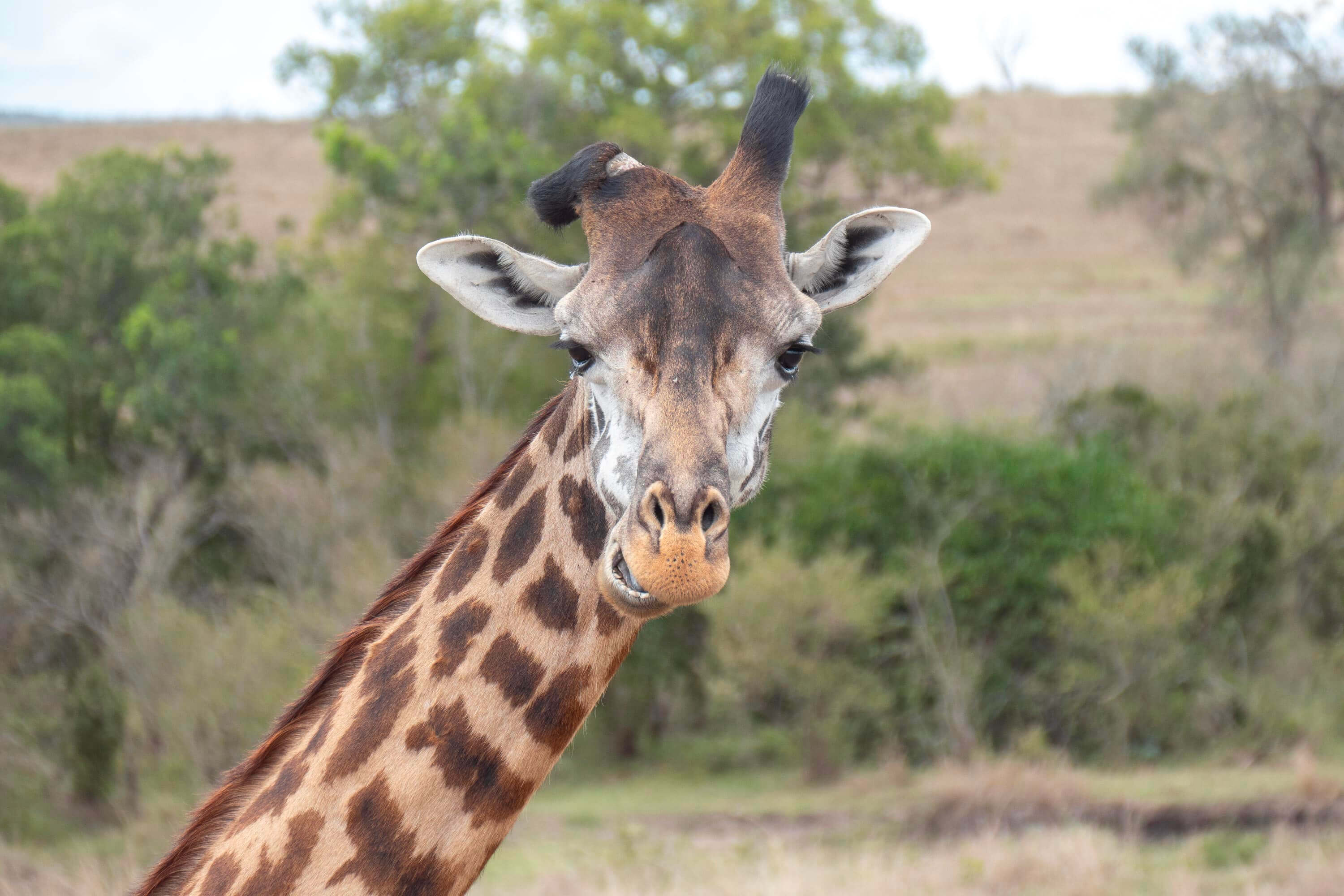Safari in Maasai Mara
People do not go to Kenya to stroll around Nairobi or visit the Kibera slums. People go to Kenya to go on a safari. A photo safari, for sure.
Safari in Kenya is part of the national culture. It’s a part so well-developed that one doesn’t need to book a safari in advance and can arrange a tour right at the airport desk and head straight to the savannah from there.
There are dozens of safari destinations in Kenya. The most popular reserves are Amboseli with views of Mount Kilimanjaro, Nakuru with its flamingo-populated lake, and Nairobi National Park just half an hour from the city center. Topping this list is Maasai Mara, a large national park on the border with Tanzania.
This park is home to the so-called “Big Five” animals: lion, cheetah, elephant, buffalo, and rhinoceros — and there is a high chance of seeing them all in one trip. Additionally, from July to October, the great migration of animals passes through the park, which is the source of the largest number of award-winning photographs from Africa, such as this photograph by Sam Turley.
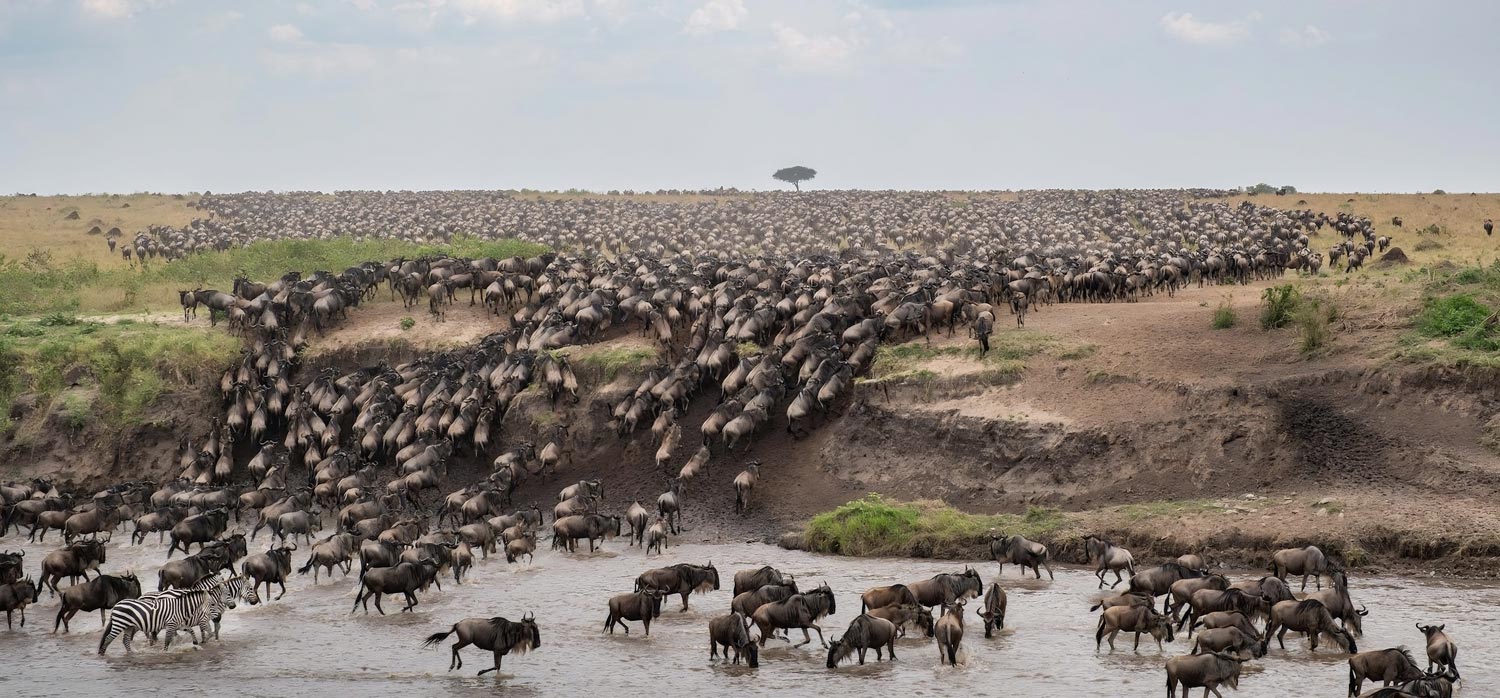
Author, of course, never captured anything like that, despite trying very hard. To take a contest-worthy photograph, one’d probably need to spend several weeks in the reserve. Normally, people book a tour for two days: less than is not enough for everything; more and you’ll get tired of driving around.
Safari-goers are accommodated in quite cozy lodges near the reserve. The connection is poor here, and internet access is only available in the local canteen.


And we don’t need no it here. Just look at the views instead. Virgin Africa!
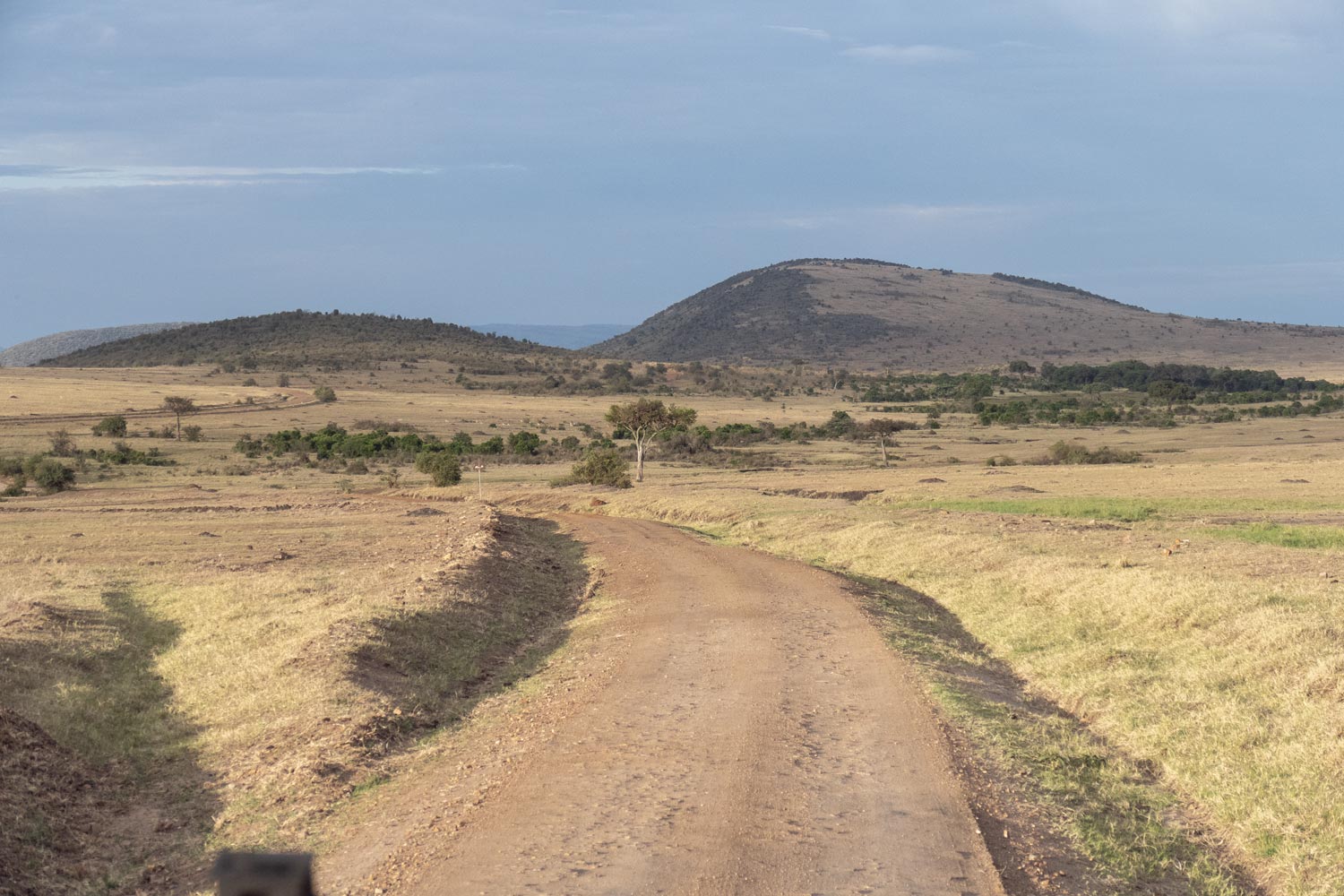
The first animal we encounter is the buffalo. It looks like just a large wild cow. In reality, the buffalo is completely mad, aggressive, and unpredictable. Even lions are wary of it because it can toss them with its horns. Humans have never managed to domesticate the buffalo; it’s too wild.
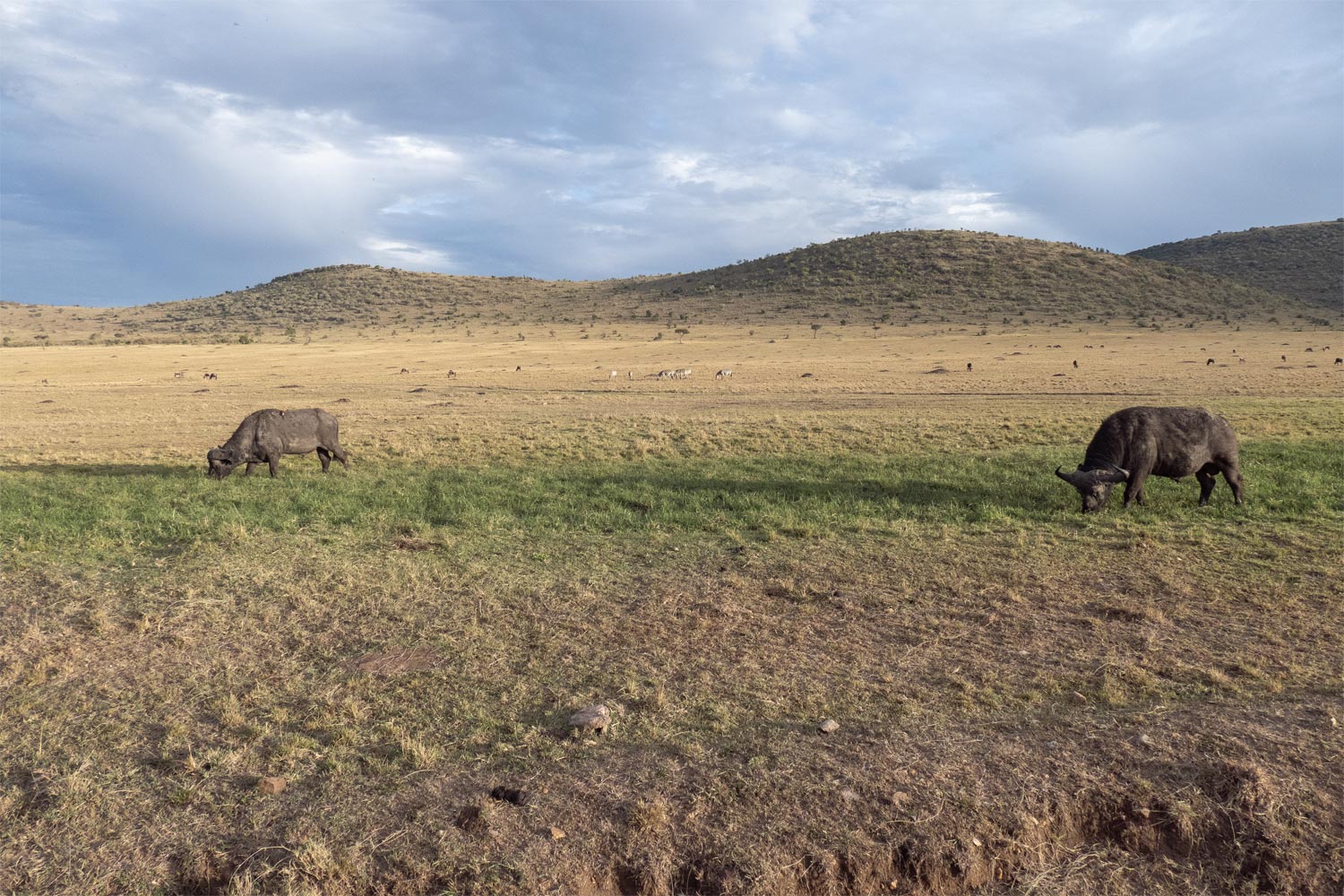
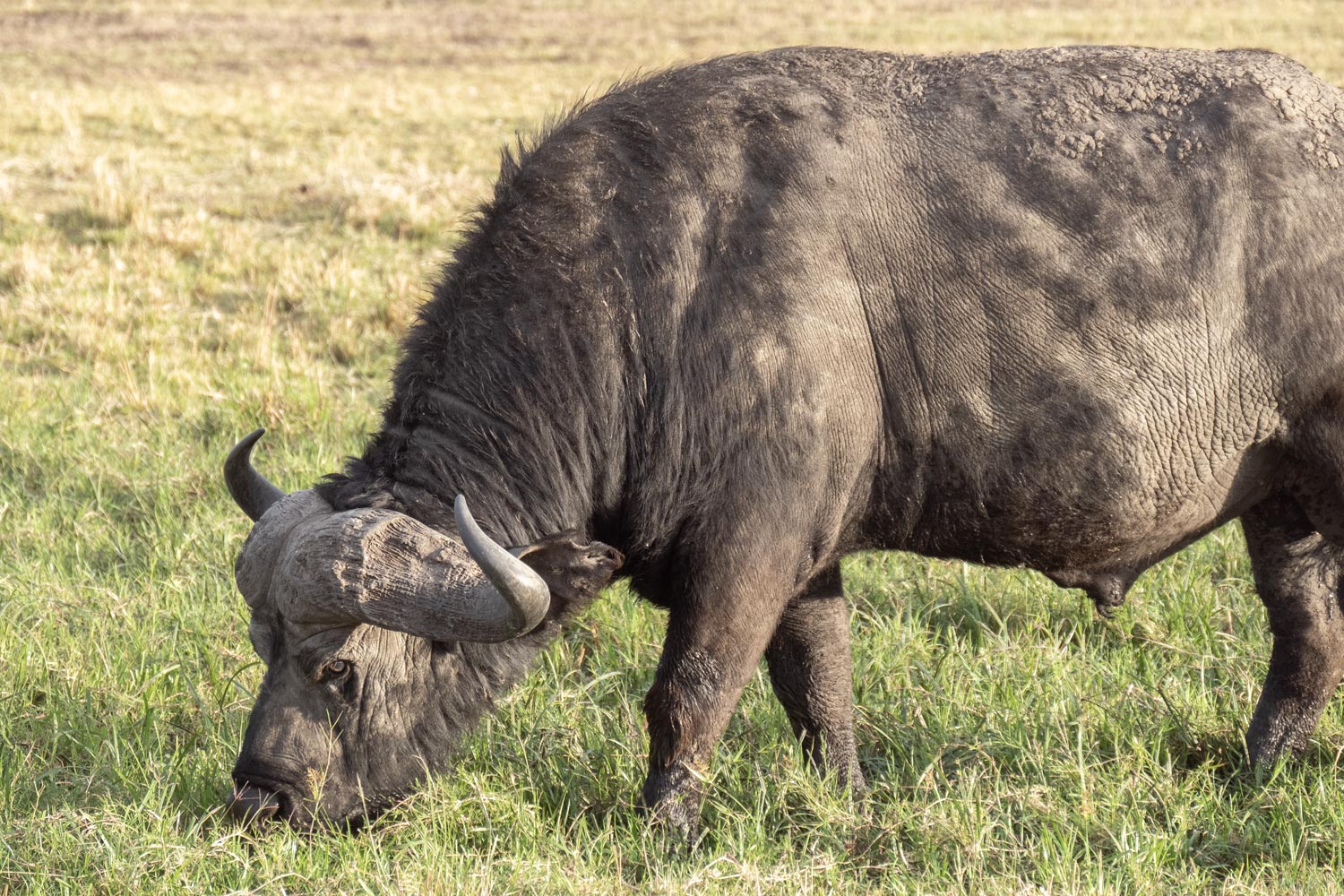
On the back of the buffalo, there are often small birds with a red spot on their beak. These are oxpeckers.
A long time ago, it was believed that these birds lived in symbiosis with the buffalo, helping it get rid of parasites by picking them from its fur and eating them. Later, it turned out that oxpeckers are more like parasites themselves. These creatures actually peck at the poor buffaloes and drink their blood, while introducing various parasites into the wounds and causing diseases.
However, buffaloes usually don’t mind the birds. It seems that oxpeckers still provide more benefits, and they drink blood because eating dry ticks is not tasty.
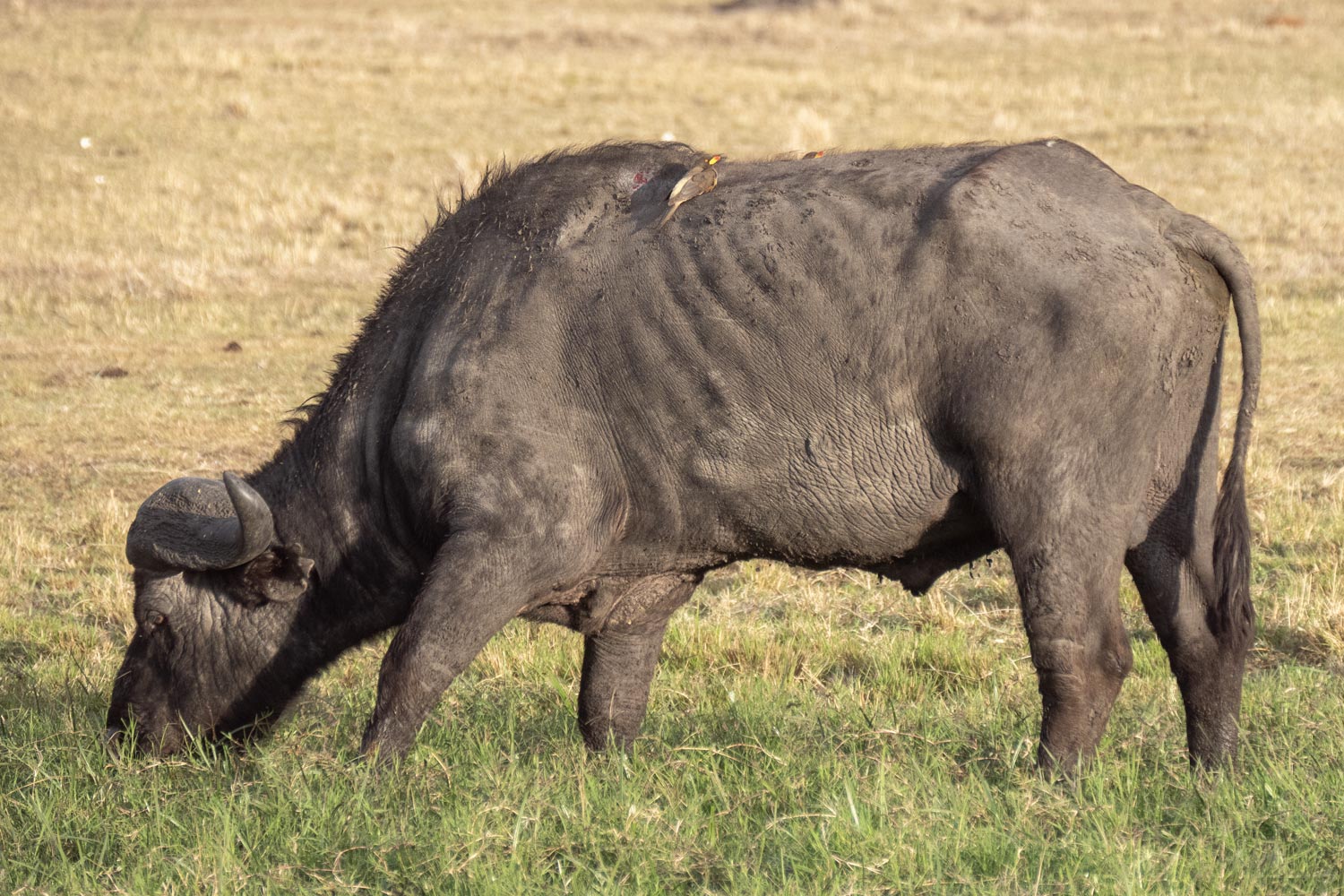
Next comes a zebra. Essentially, it’s a wild horse with an unusual painting.
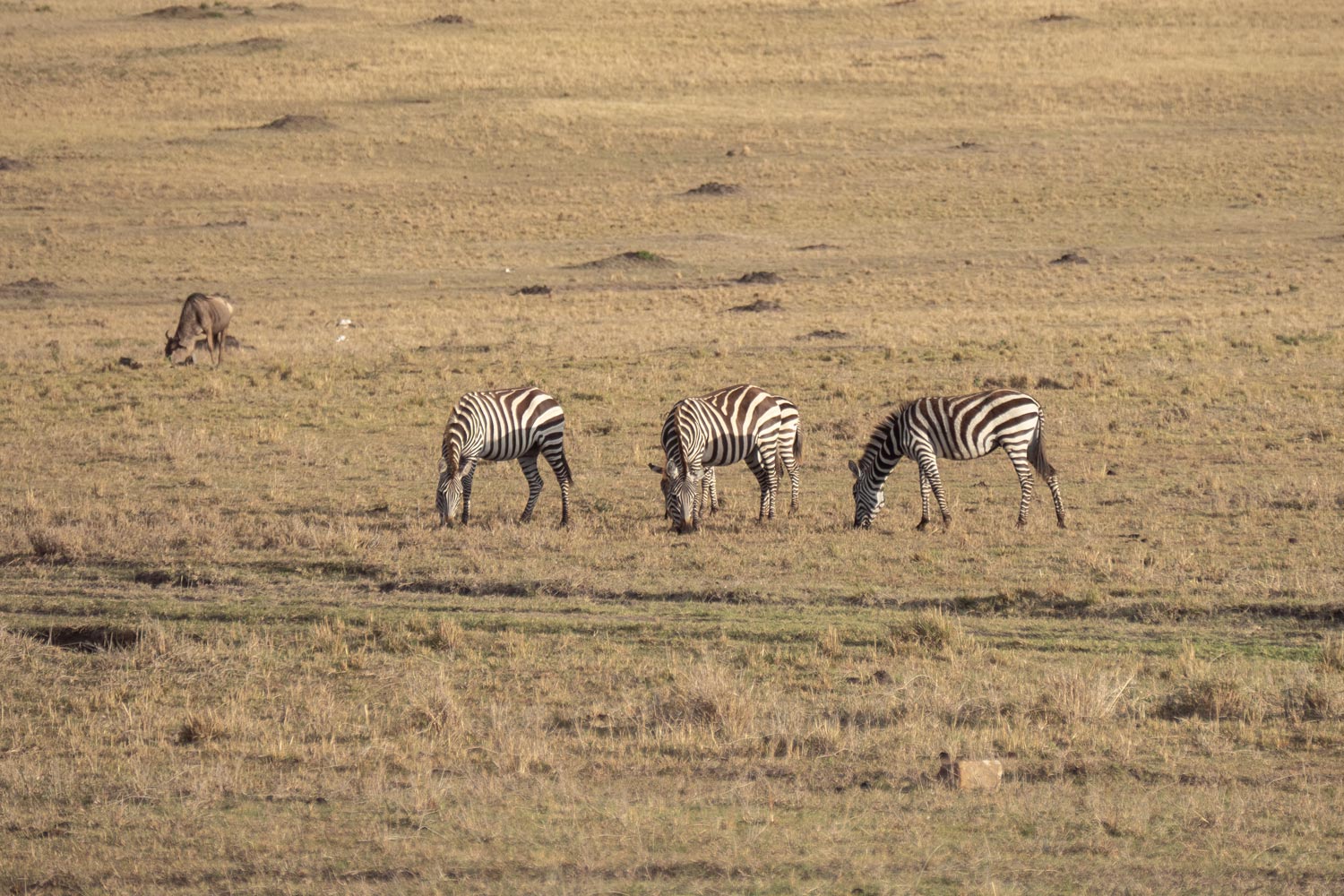
Domestication hasn’t been successful with zebras either. They may look cute, but in reality, they are quite aggressive: they bite, kick, and are difficult to train. Stubborn as a donkey.
By the way, a zebra is actually black with white stripes, not the other way around. First, a zebra embryo is completely black in the womb, and then white stripes appear on it. Second, if you shave a zebra bald, its skin is entirely black. The white stripes are areas with deactivated pigmentation.
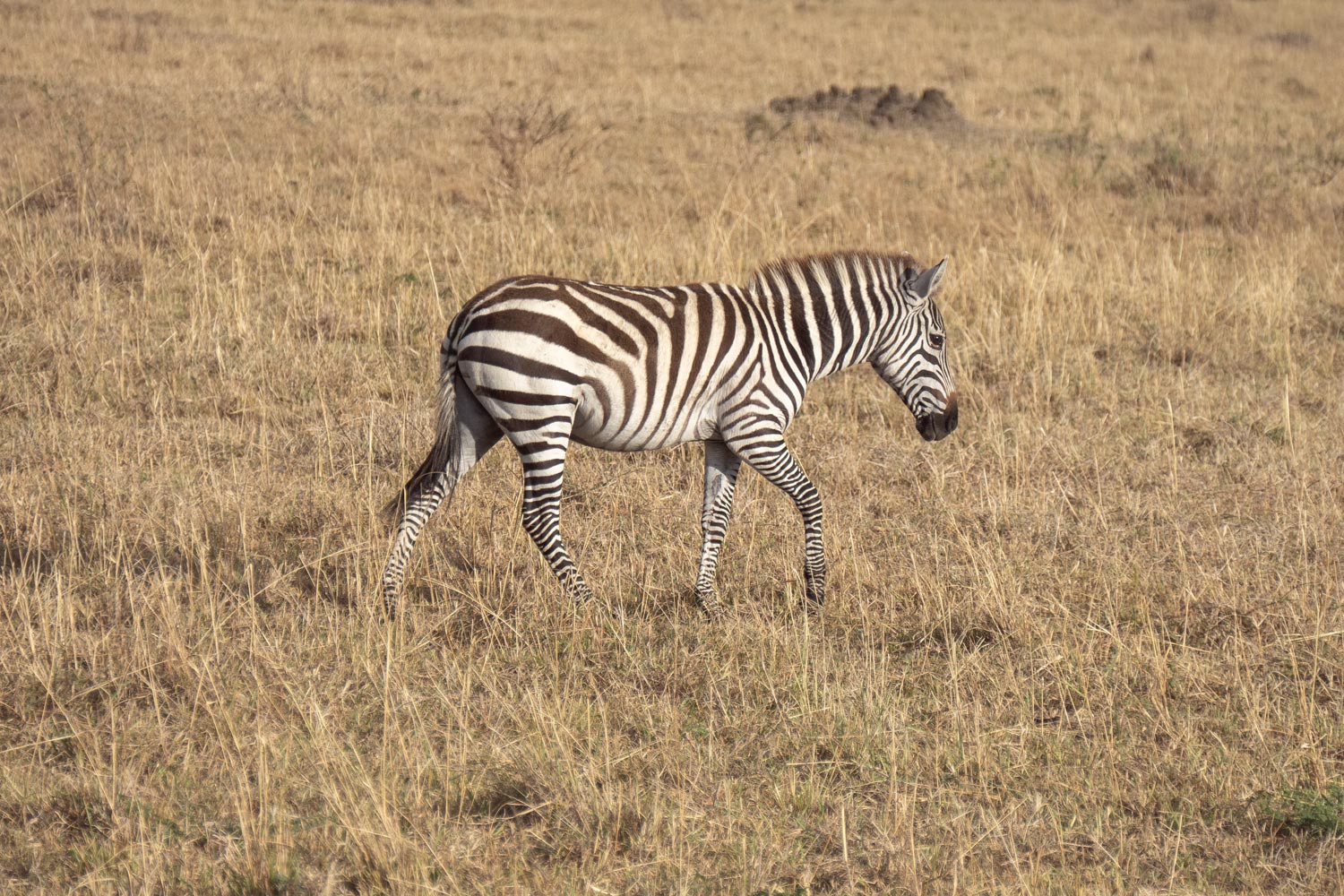
But why does a zebra have stripes at all? Taxpayer money helped put an end to this question. By dressing an ordinary horse in a striped tights, scientists discovered that such a figure attracted four times fewer flies. Insects simply get confused by the zebra pattern and can’t land properly.
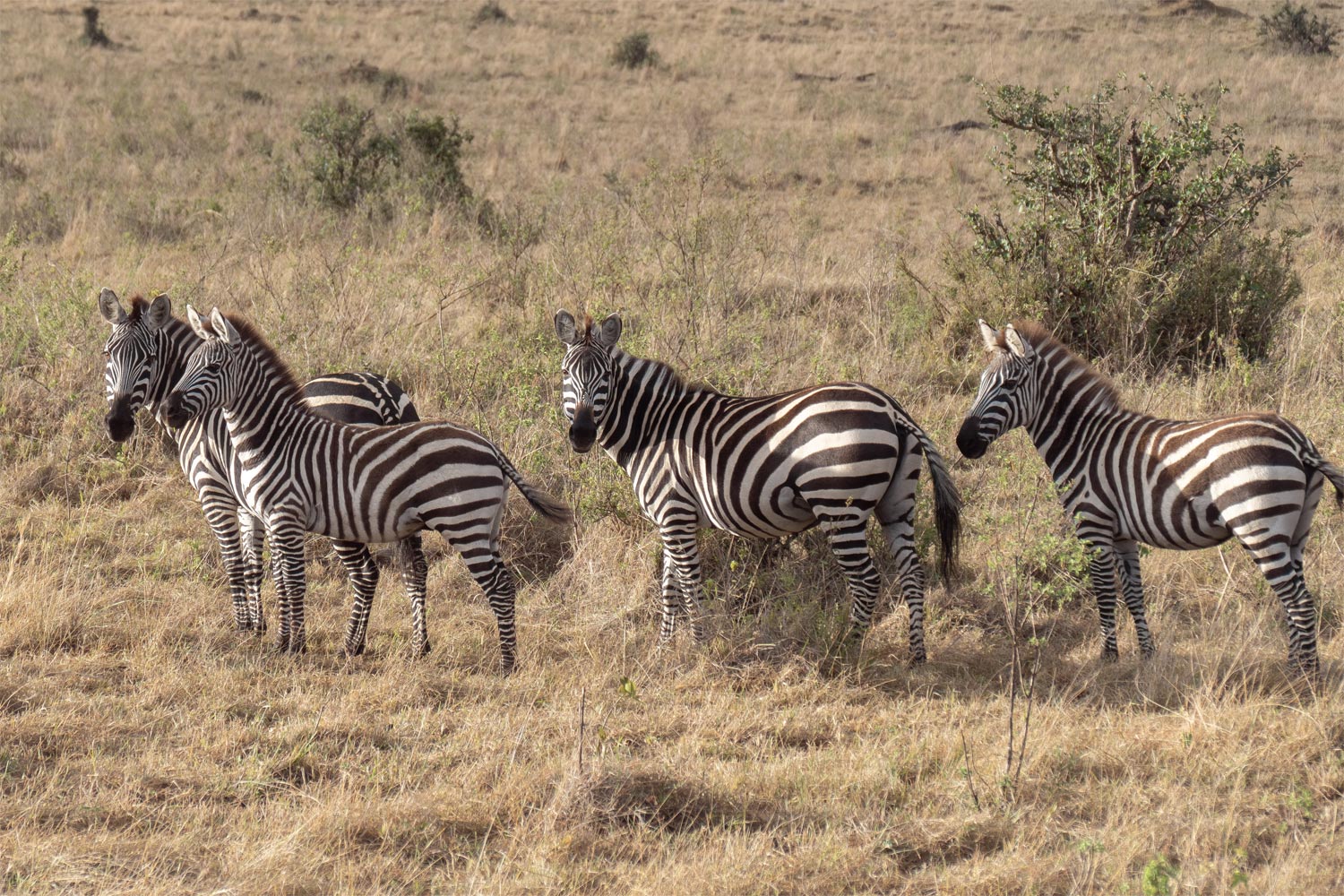
It seems that this theory is a bit of a stretch. But flies are a real problem for animals in Africa. For example, there might be a lioness lying peacefully on a hill.
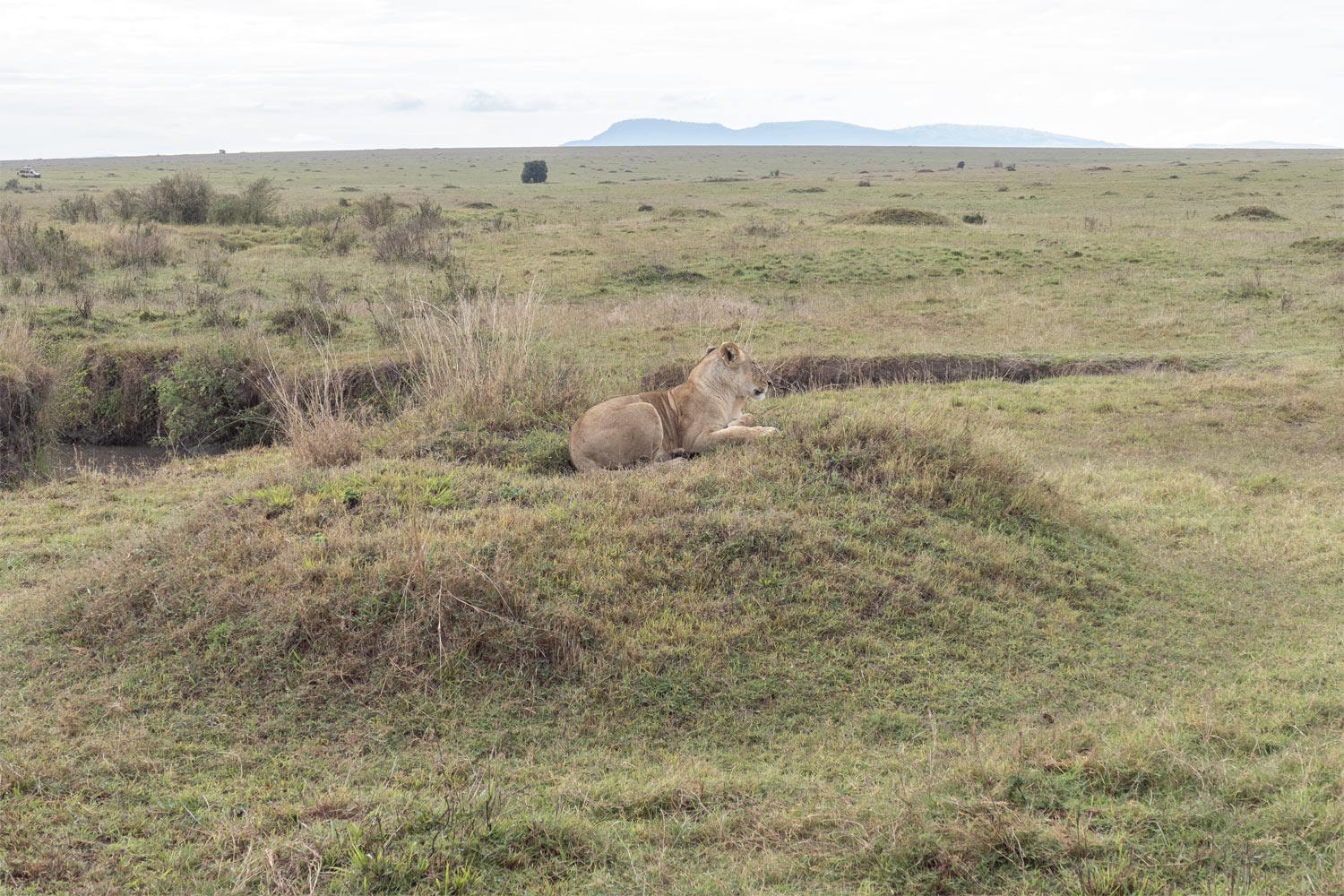
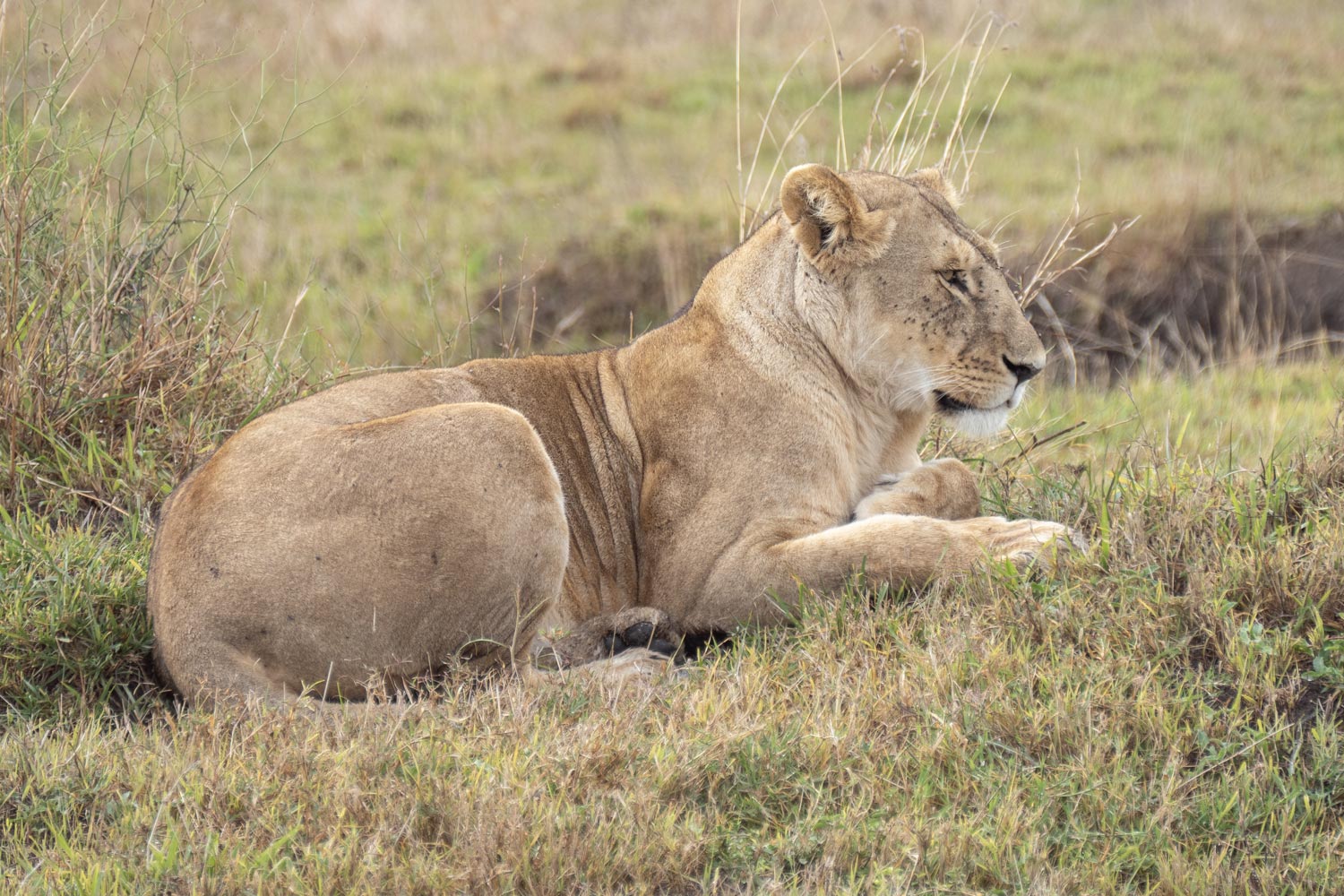
And her entire face is covered with flies.
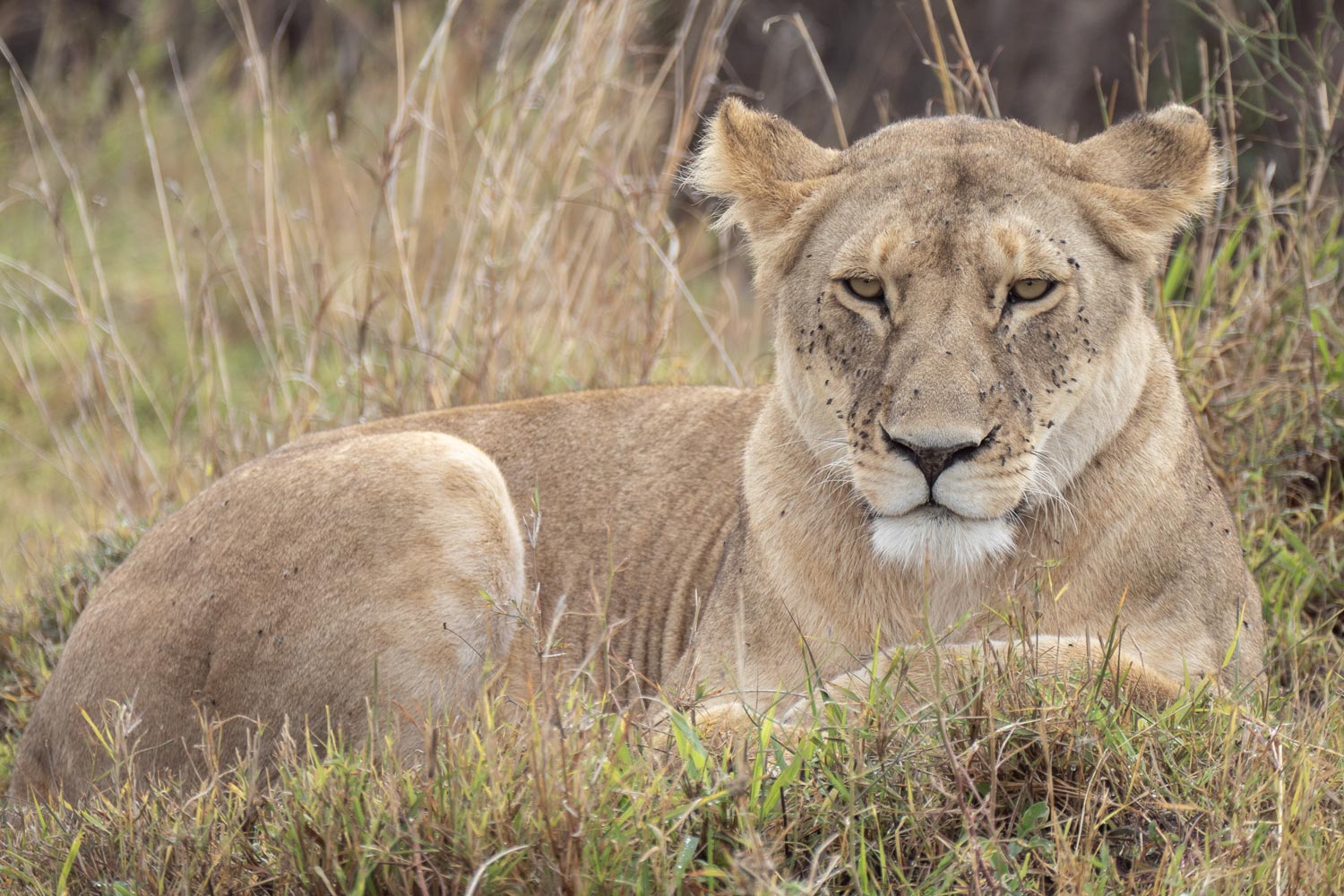
The same goes for the lion. The animals don’t even bother to shoo them away because it’s pointless. They live their whole lives with flies on their faces.
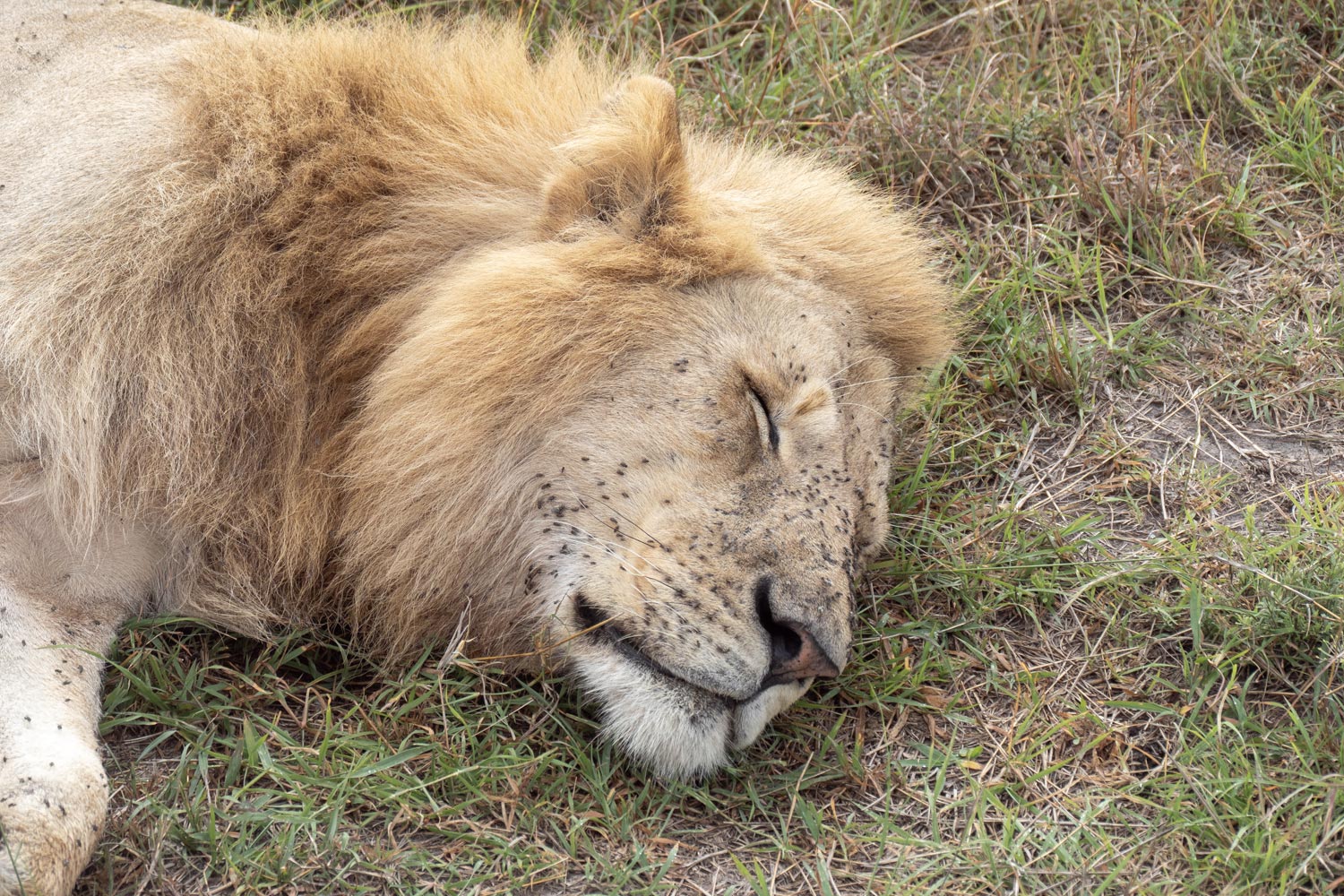
If one manages to find lions without flies, one will notice many scars on their faces.
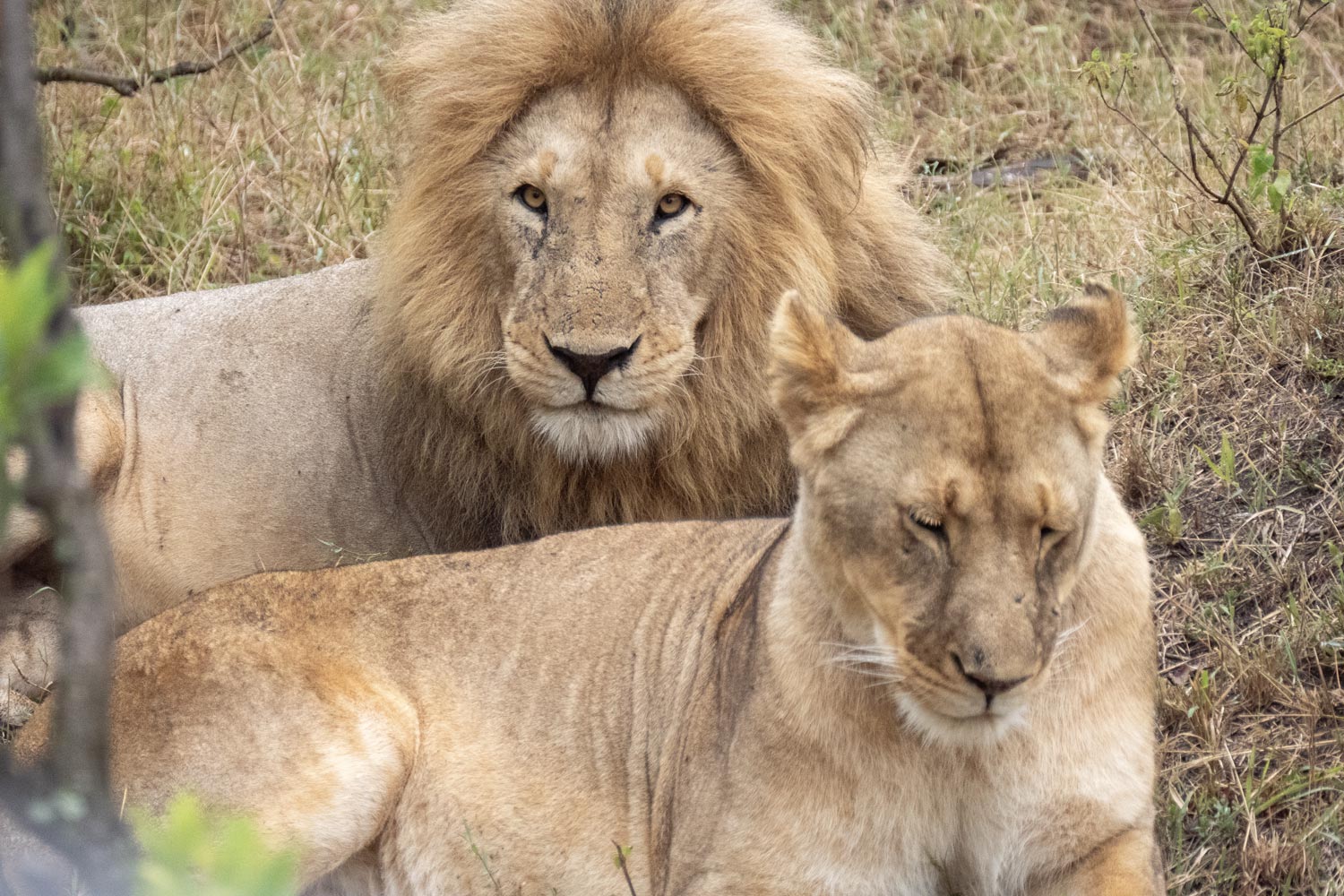
But these are not marks from insect bites. The fact is that lions are constantly hunting and fighting, so they are always scratched and wounded.
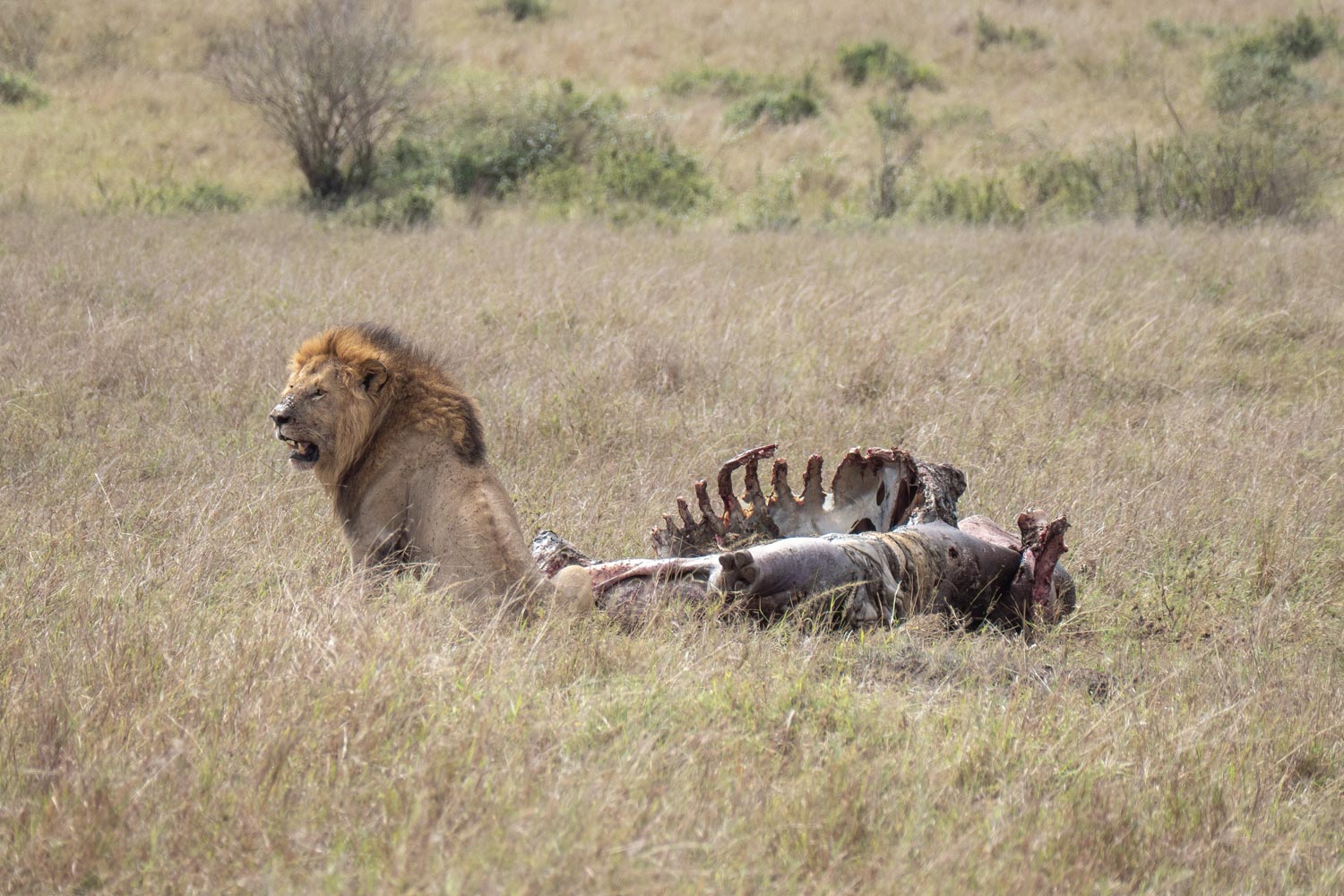
Additionally, lions enjoy eating antelopes and other small African animals. As a result, their faces are often covered in blood and meat remnants. That’s why flies land on their faces: they’re not eating the lions themselves but what’s left on their faces after a meal.
For example, young lion cubs don’t have this problem.
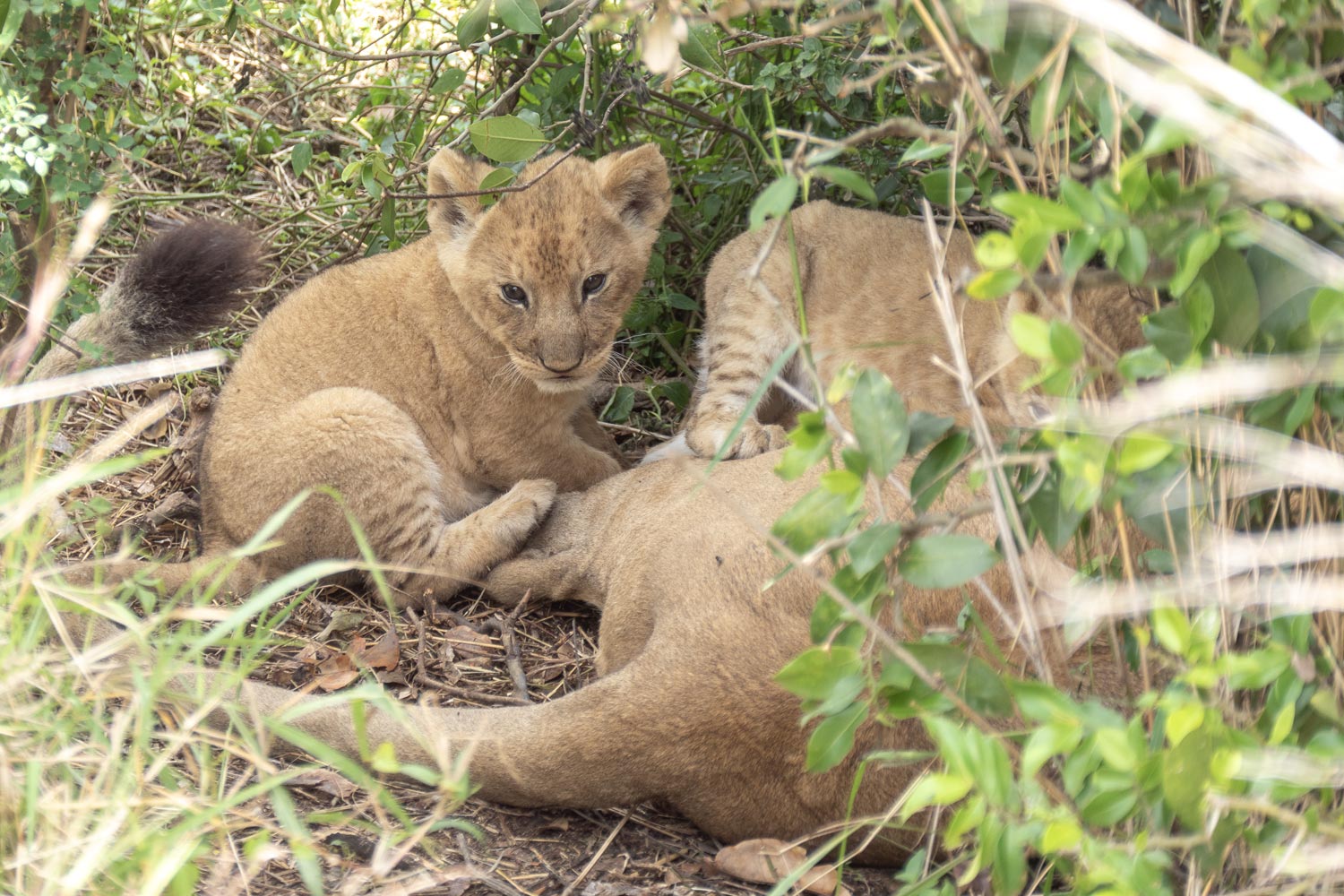
However, cheetahs have. They also eagerly devour their prey.
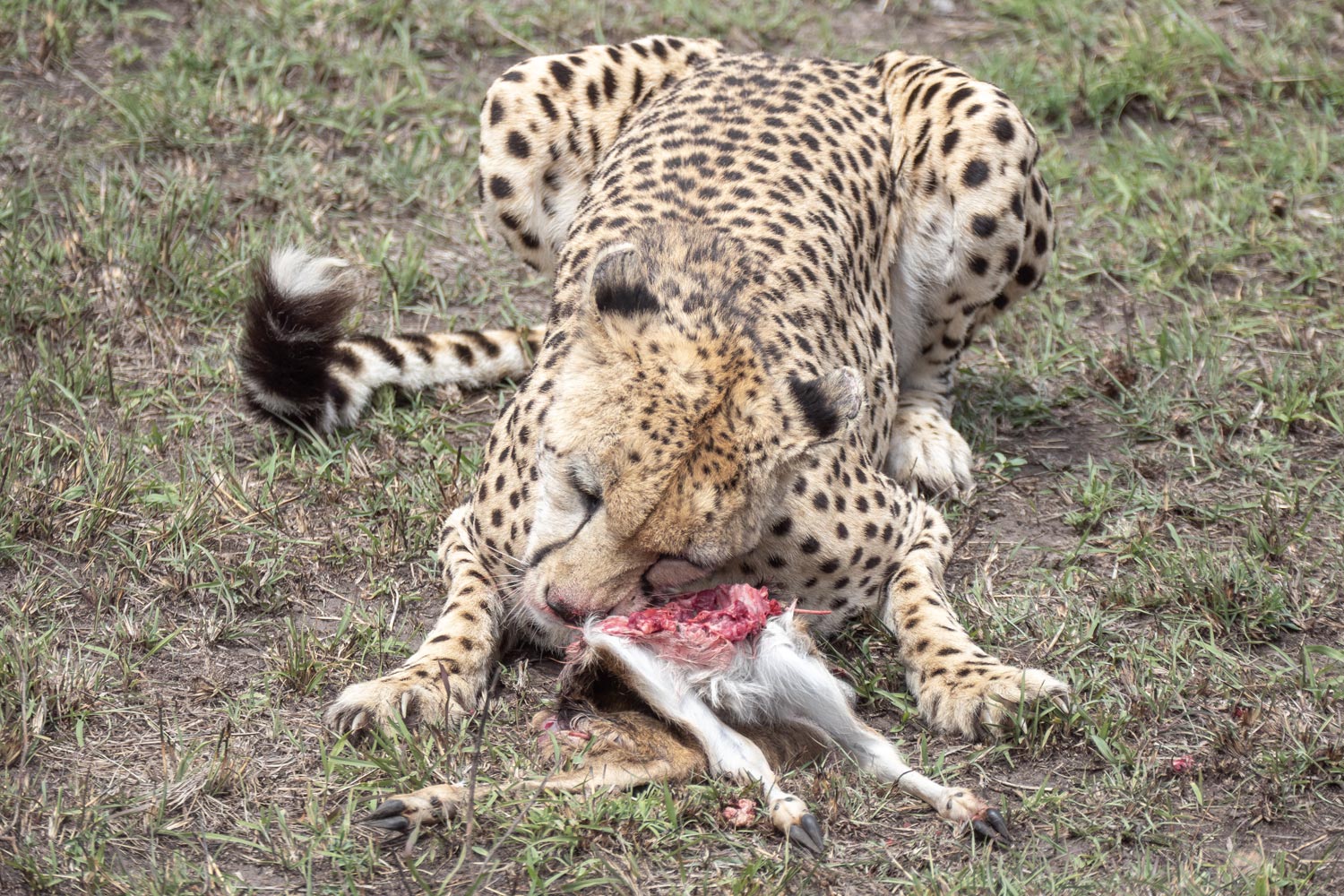
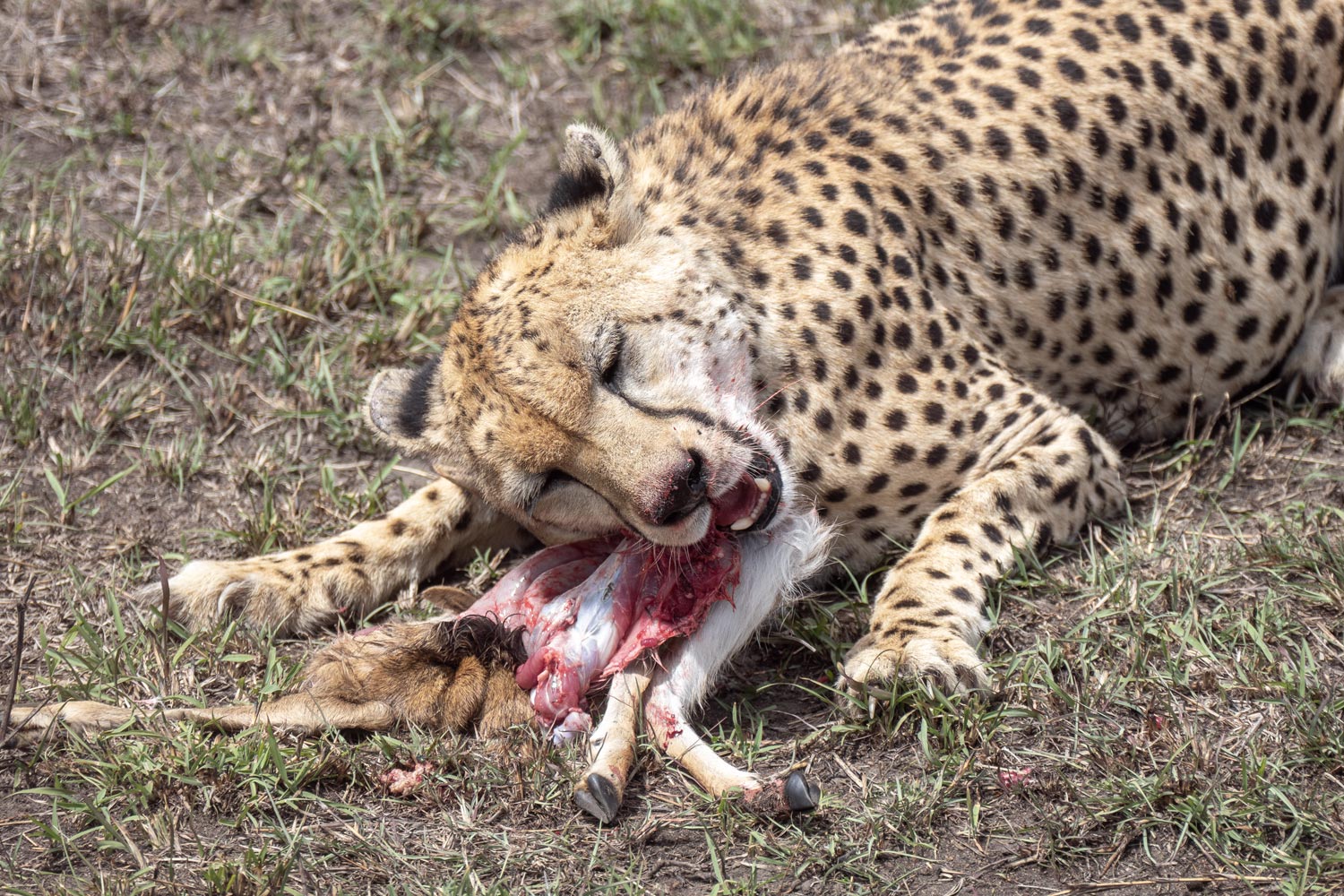
After such a meal, their entire face, including the whiskers, is left covered in blood.
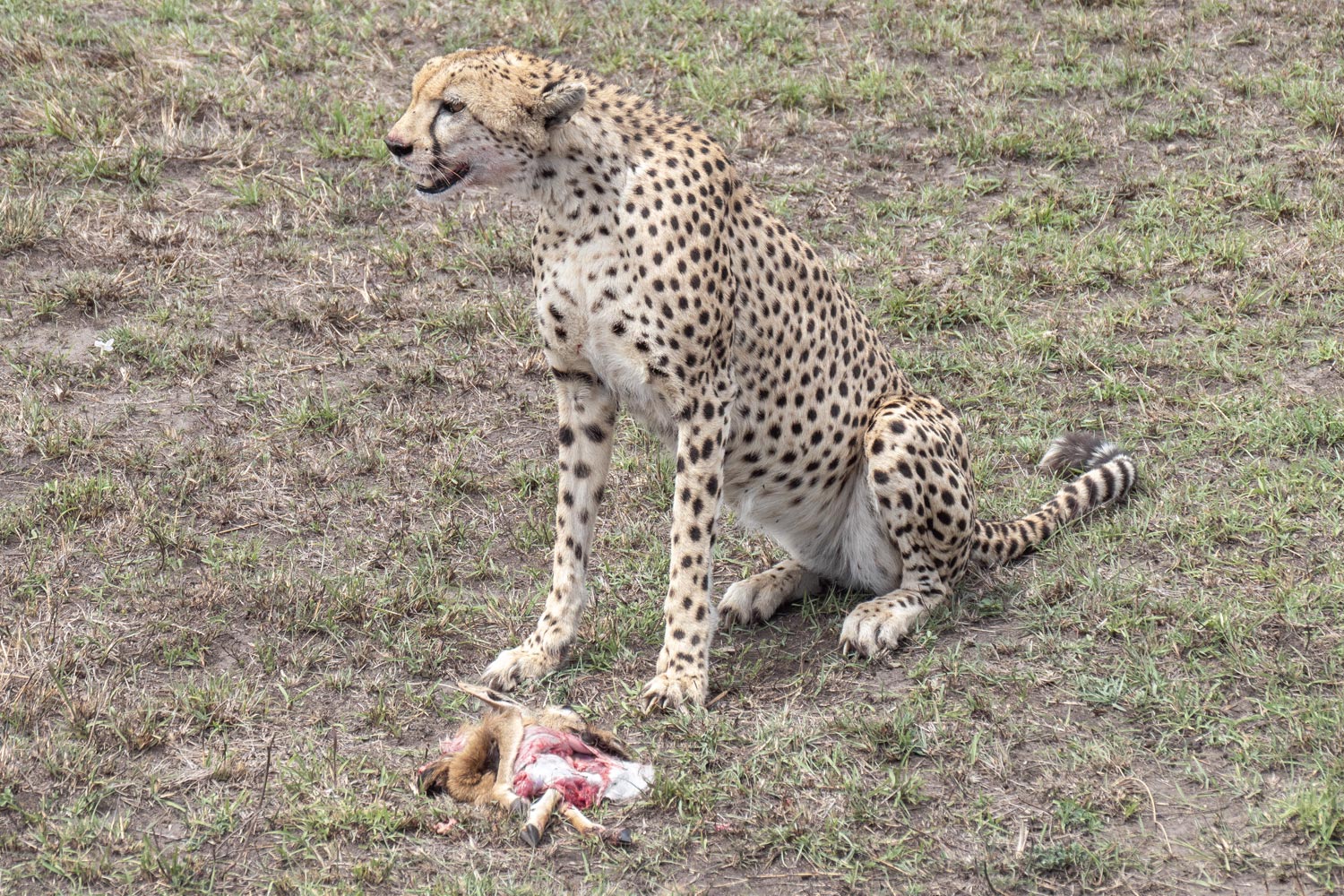
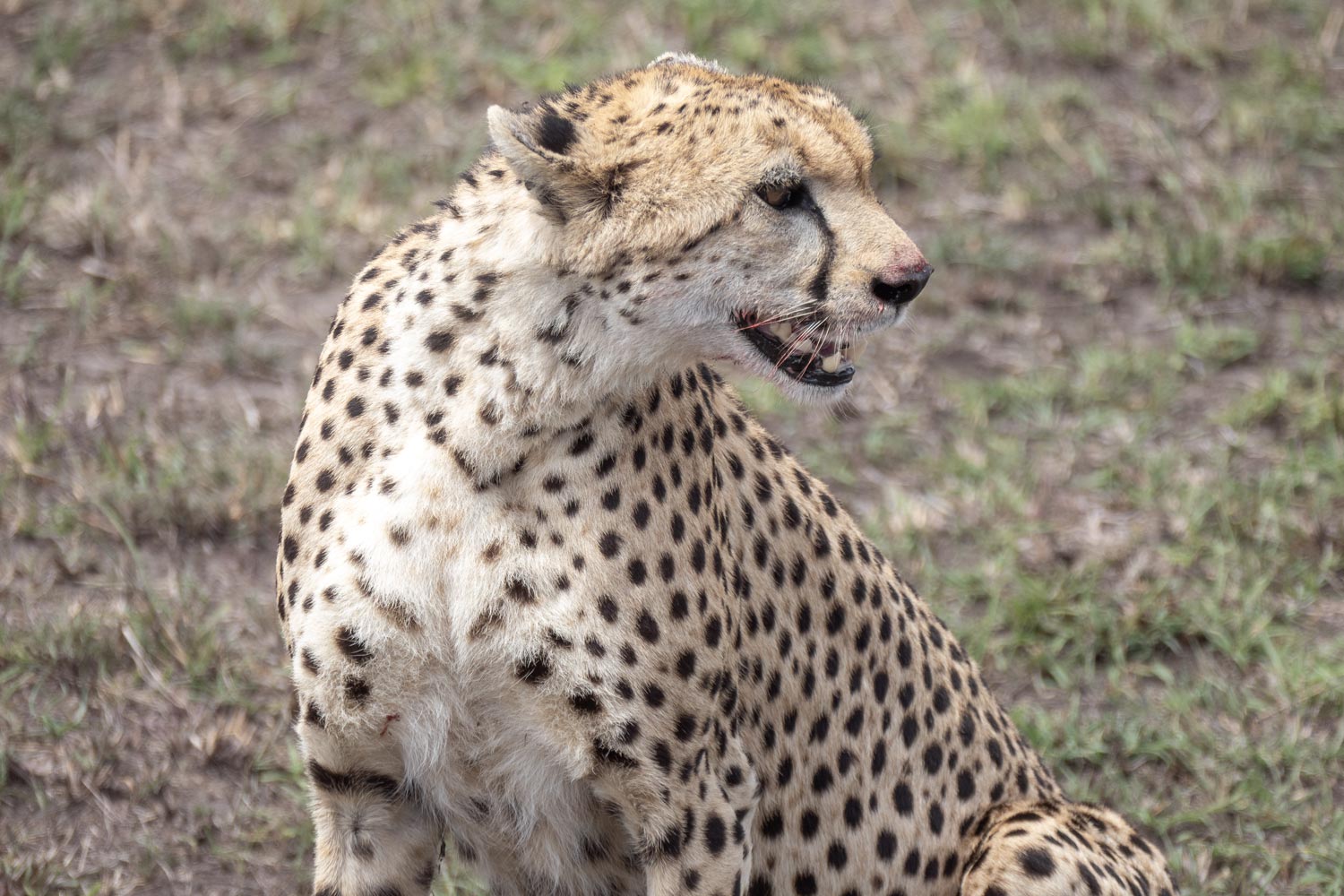
By the way, cheetahs are often confused with leopards. In reality, they are quite different, even though both have spots.
Both animals are found in the Maasai Mara park, but the animal in the photographs is a cheetah: it is slender and graceful, whereas a leopard is stockier, more like a tiger.
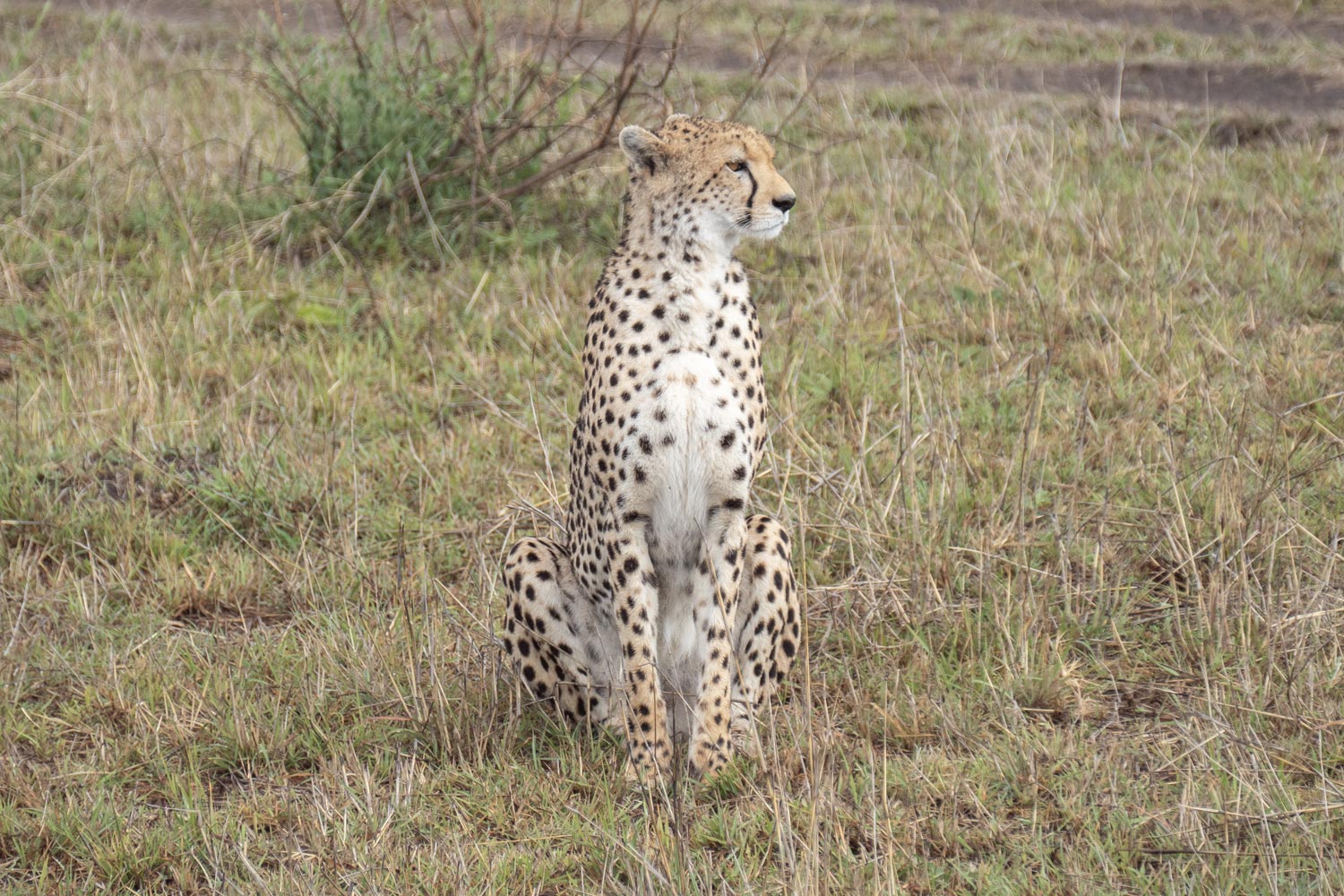
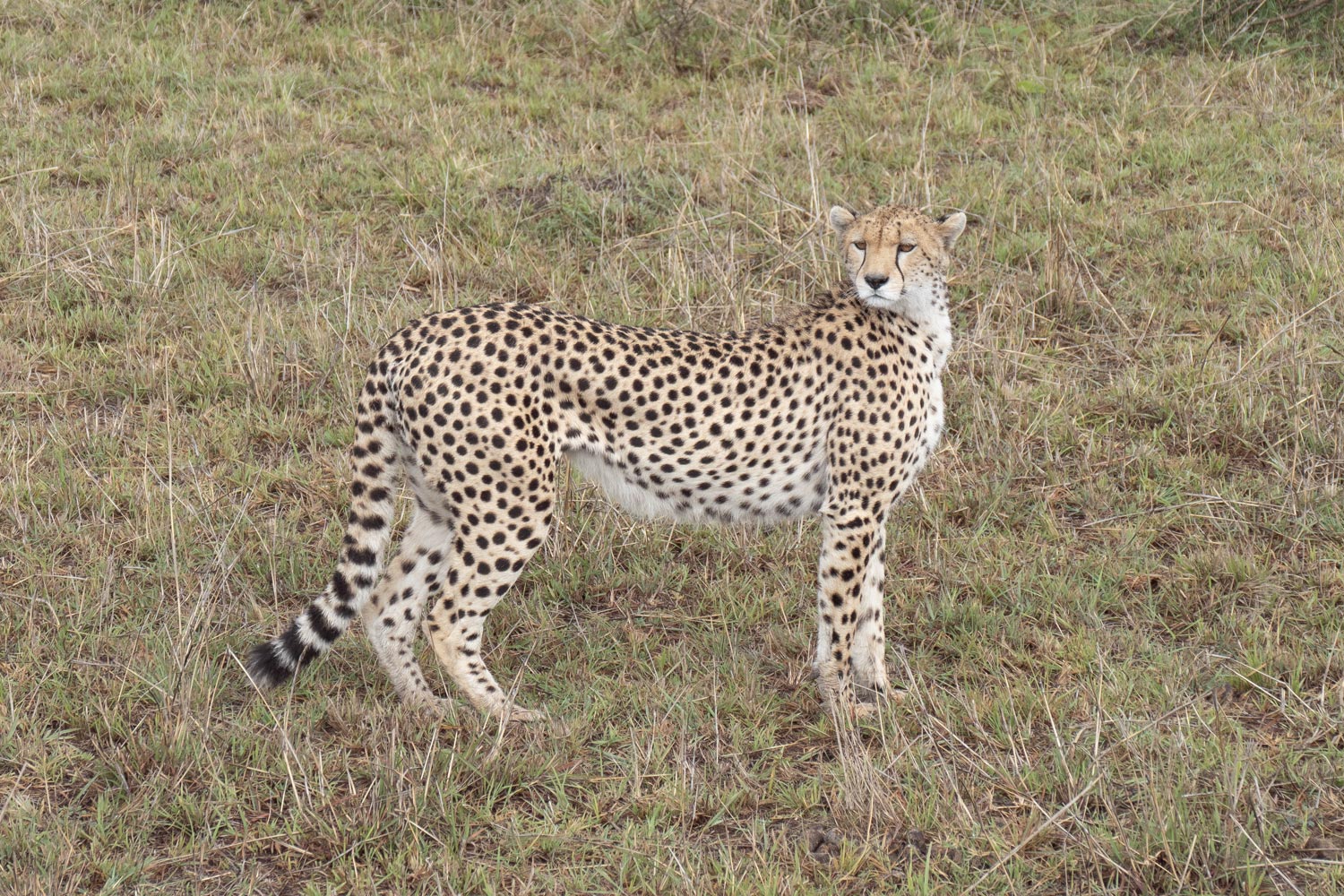
Whatever the lions and cheetahs don’t finish is left for smaller predators: hyenas and vultures. A vulture is a bird that feeds on carrion and scraps from other animals’ kills.
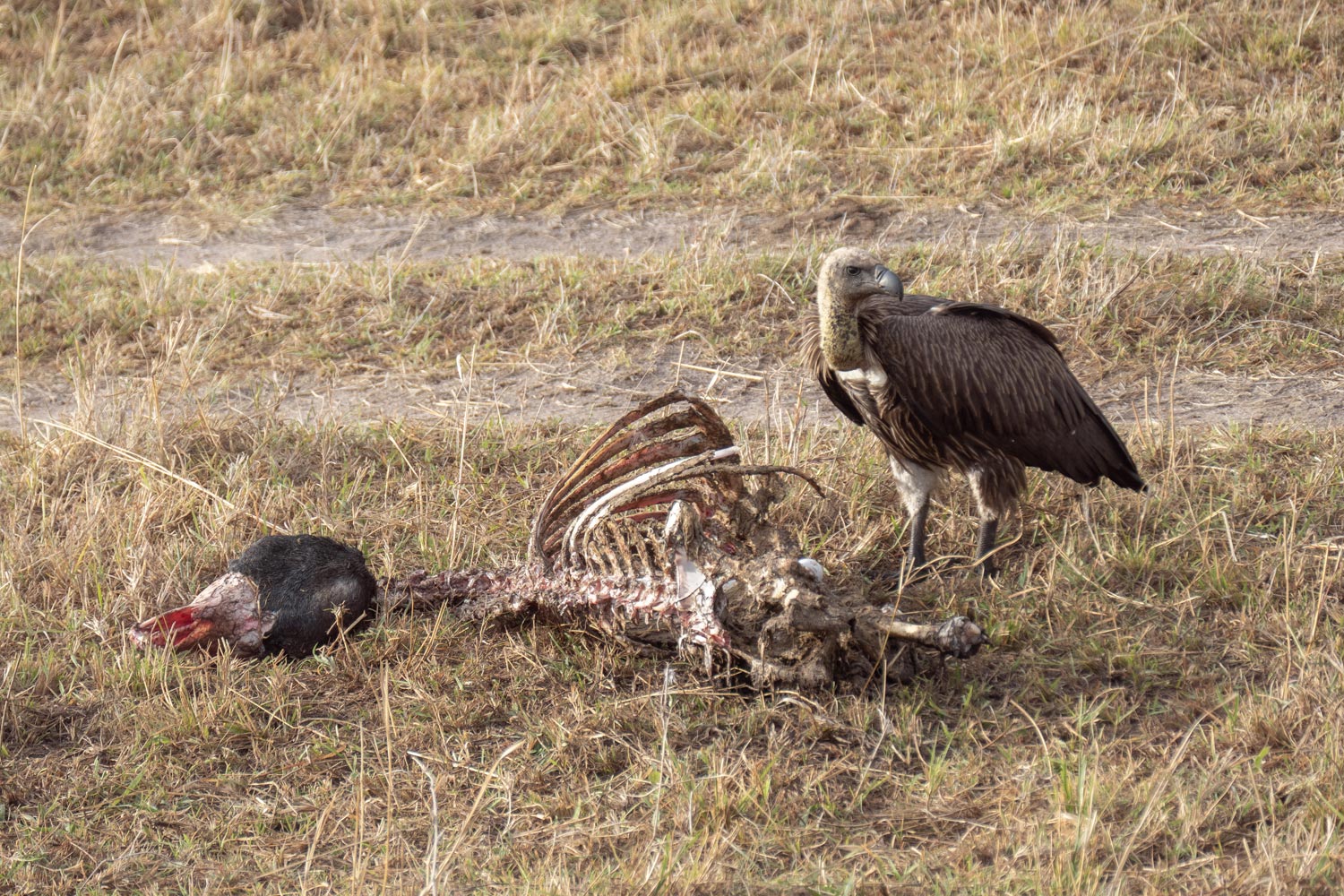
Although vultures look intimidating, they are not dangerous to humans. They only eat carrion, do not attack people, and are very timid. They also can’t grasp things: their feet are adapted for walking, not for catching prey.
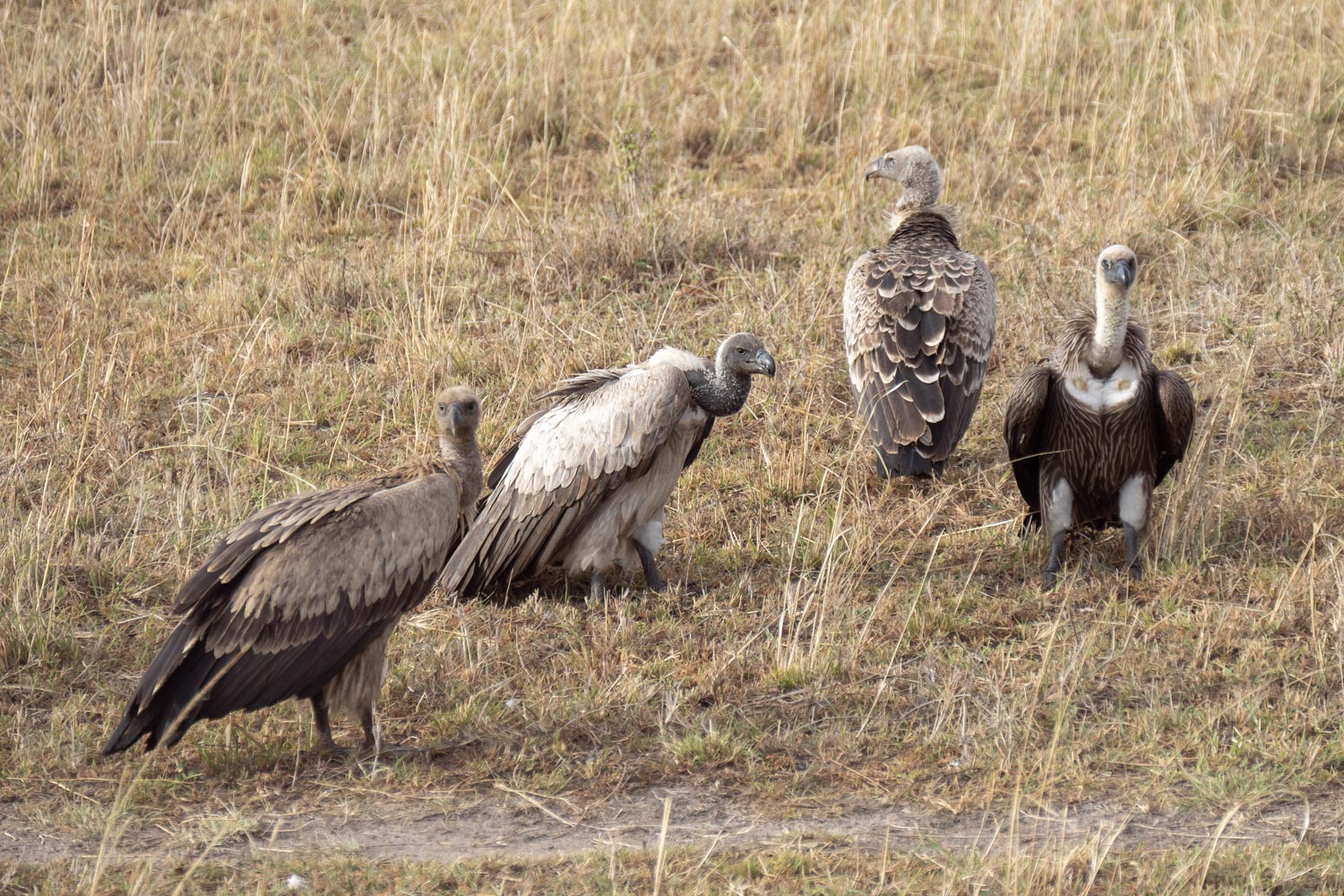
Hyenas are hardly dangerous either. These dogs cats are very timid and will only attack in a pack, at night, and if they are very hungry. During the day, and especially alone, they prefer to flee at the first sign of danger.
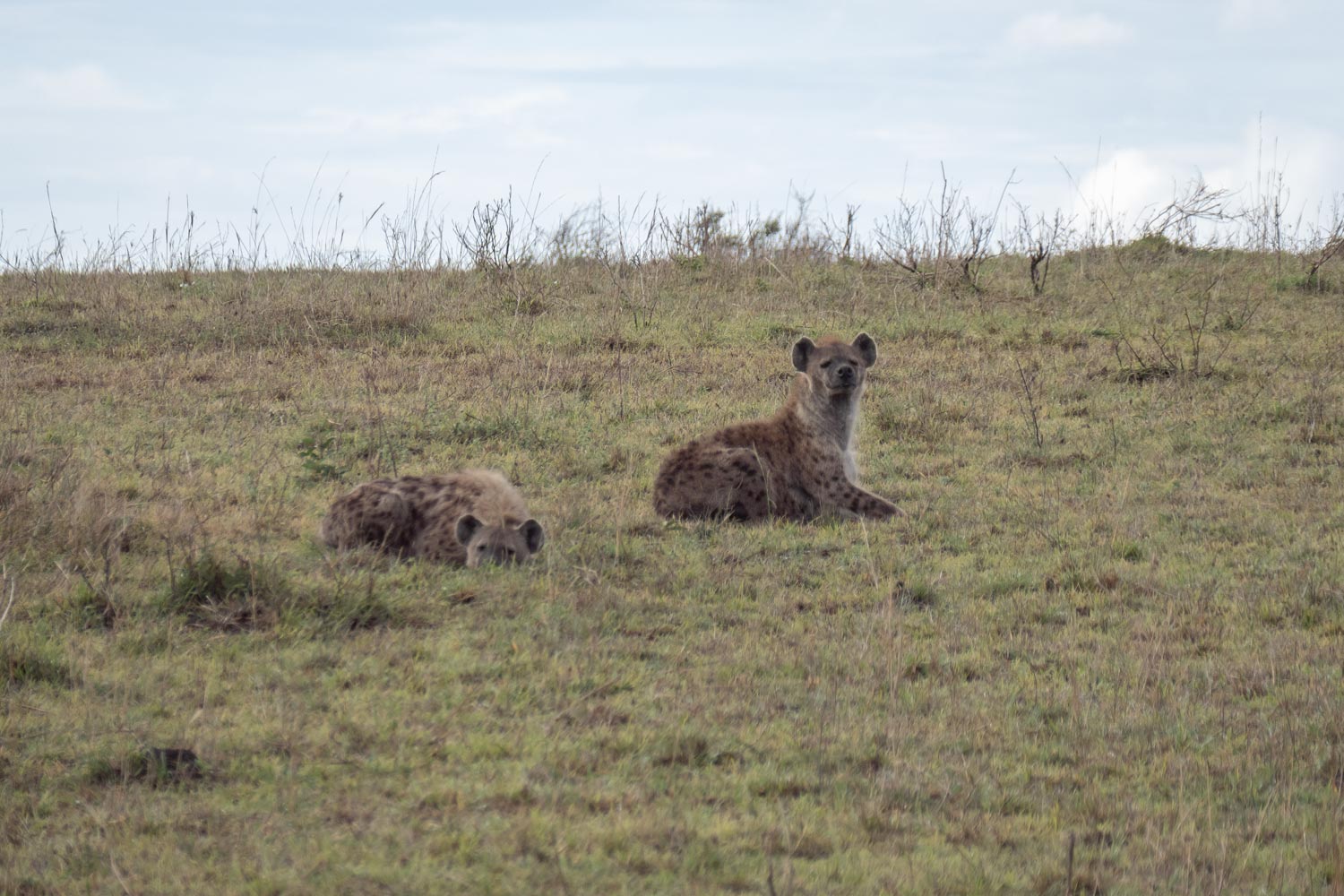
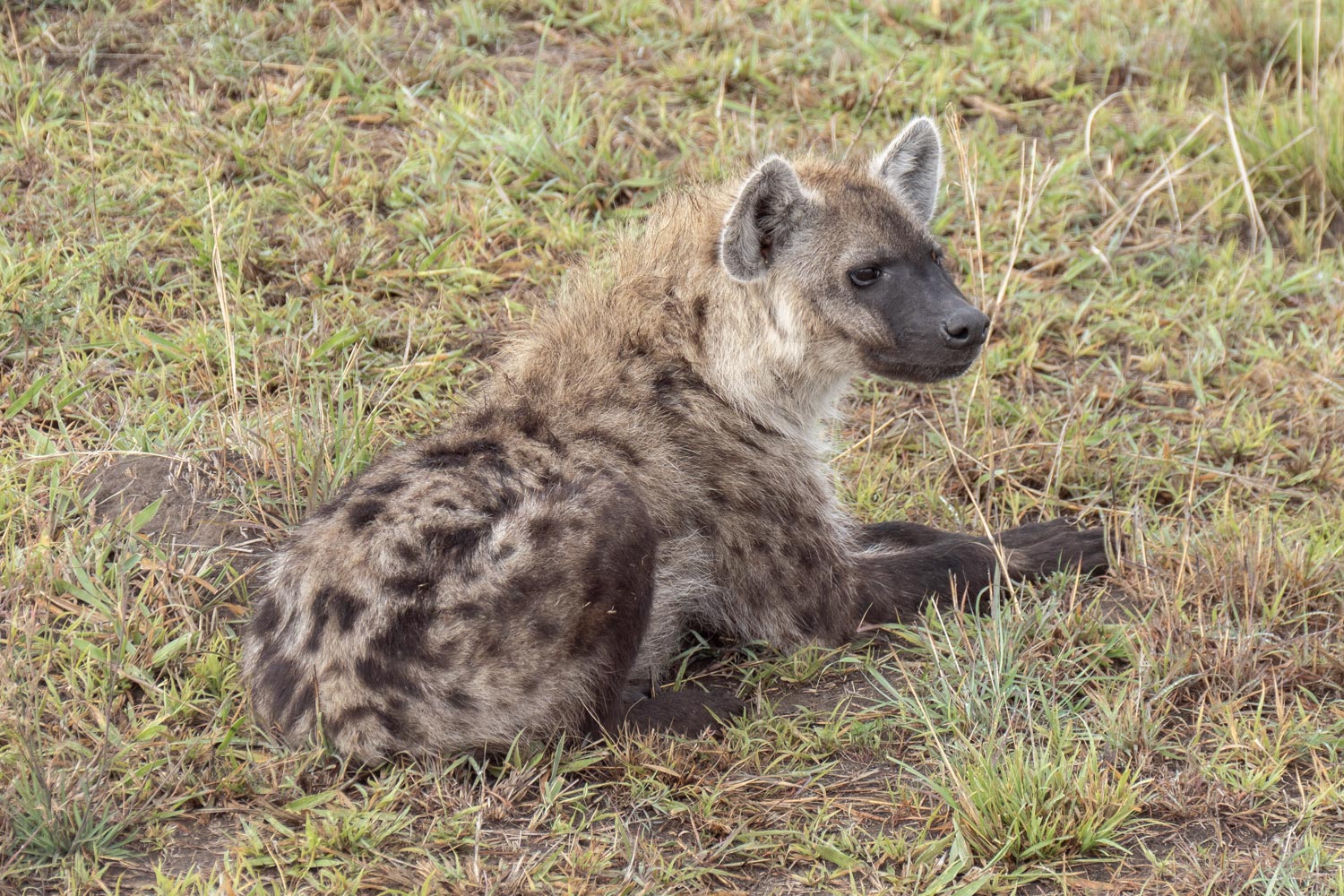
In fact, the famous hyena laugh is not really laughter but a nervous tic from fear. A hyena typically cackles when it’s cornered and its food is being taken away. Because of their cowardice and nervous laughter, hyenas are often portrayed in cartoons as extremely sneaky and ignoble animals.
In reality, the hyena is quite a good hunter, and carrion makes up only half of its diet. Also this doggy is very fond of its cubs.
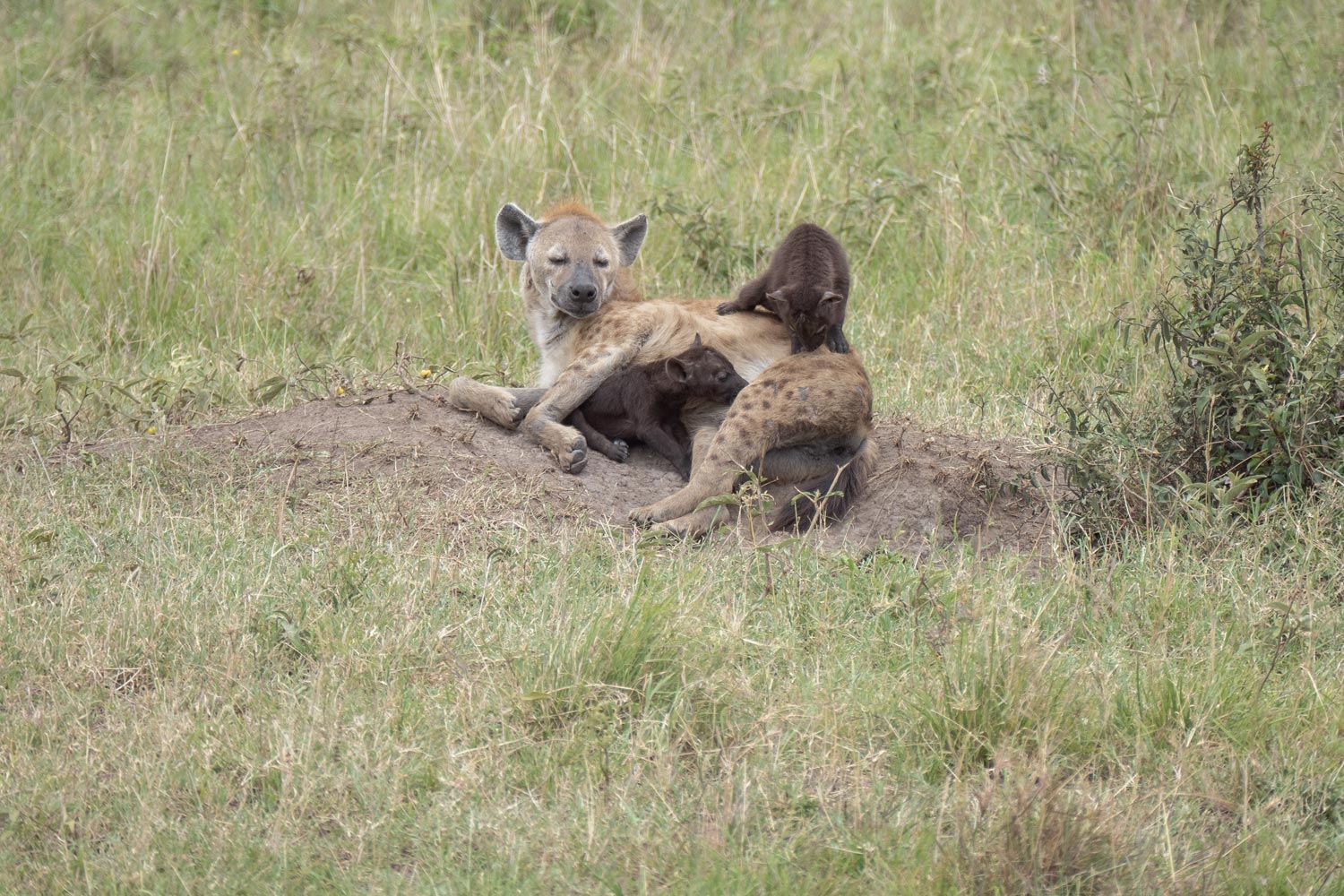
There are also smaller animals running around the park, like warthogs. They are the prototype for Pumbaa in “The Lion King.” These are far from stupid animals, capable of devising clever escape routes.
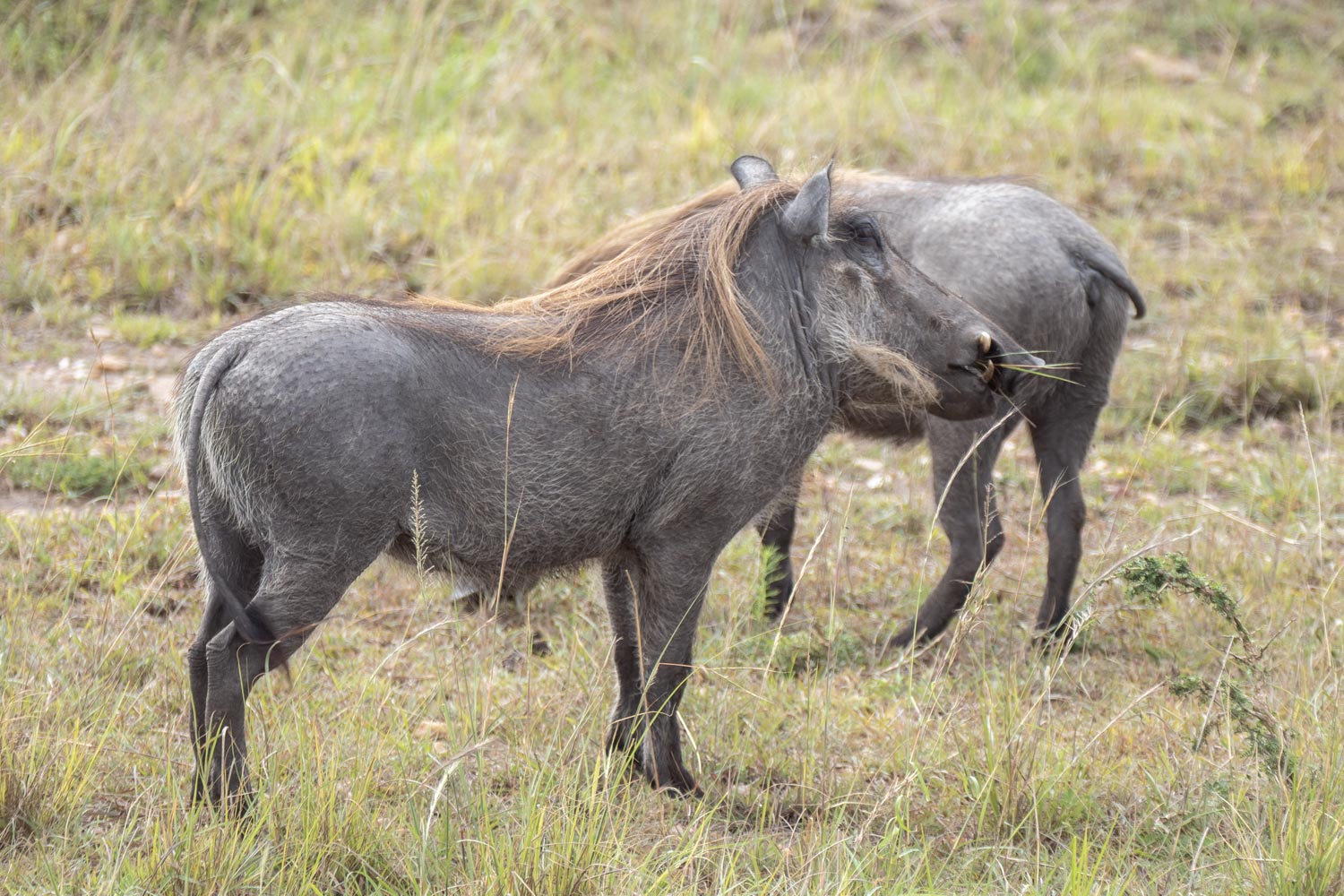
A warthog lives in burrows, which it enters backwards so that its tusks are facing the entrance. Why? For roughly the same reason a driver parks facing out for an easy exit. And due to their long legs and short necks, these hogs have to kneel on their elbows to eat.
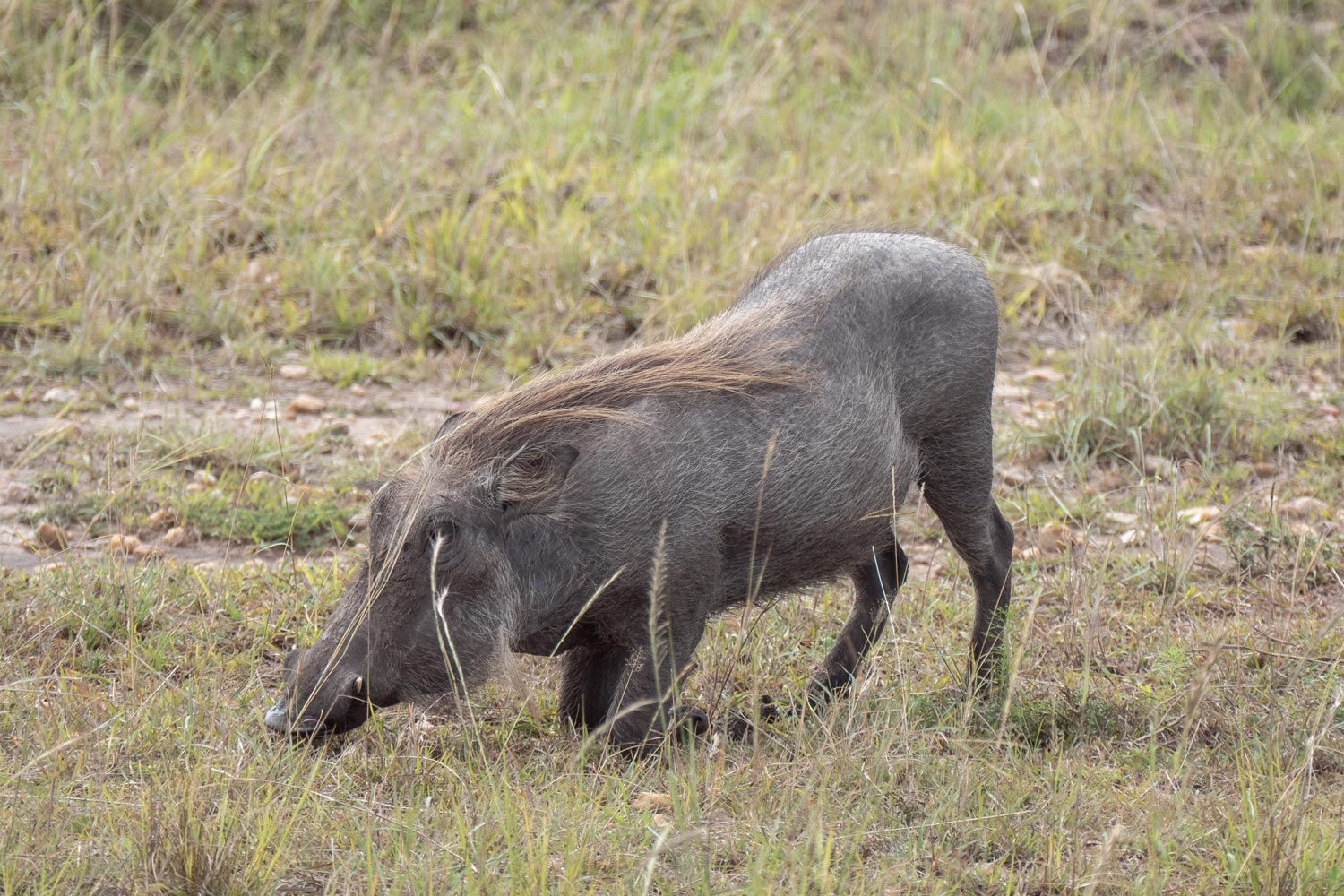
Not exactly a small creature, but ostriches are also found in the park. This bird weighs 150 kilograms and can run at speeds of up to 70 kilometers per hour, knocking over everything in its path.
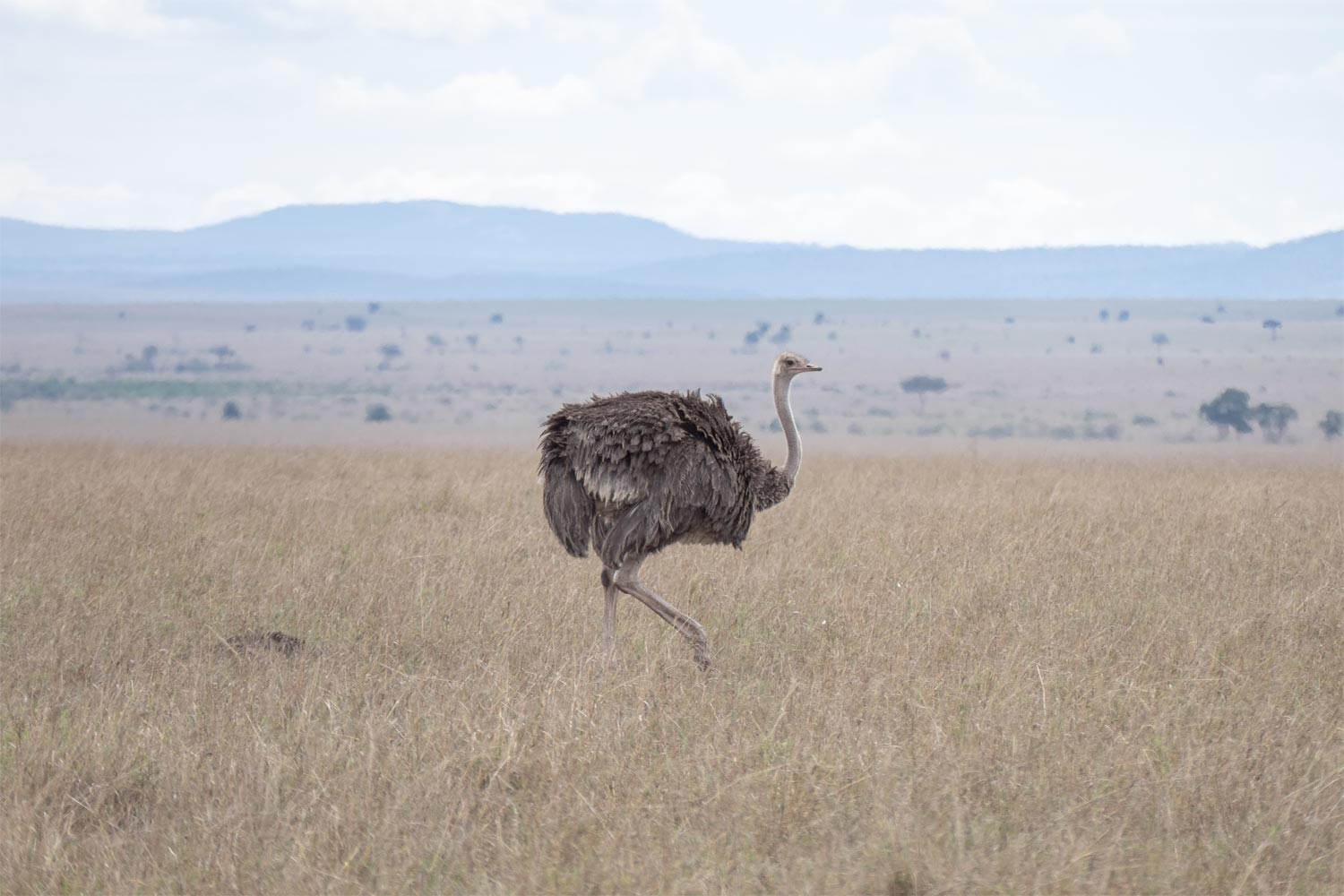
Who else is there? Antelopes, yes. They’re simply eaten.
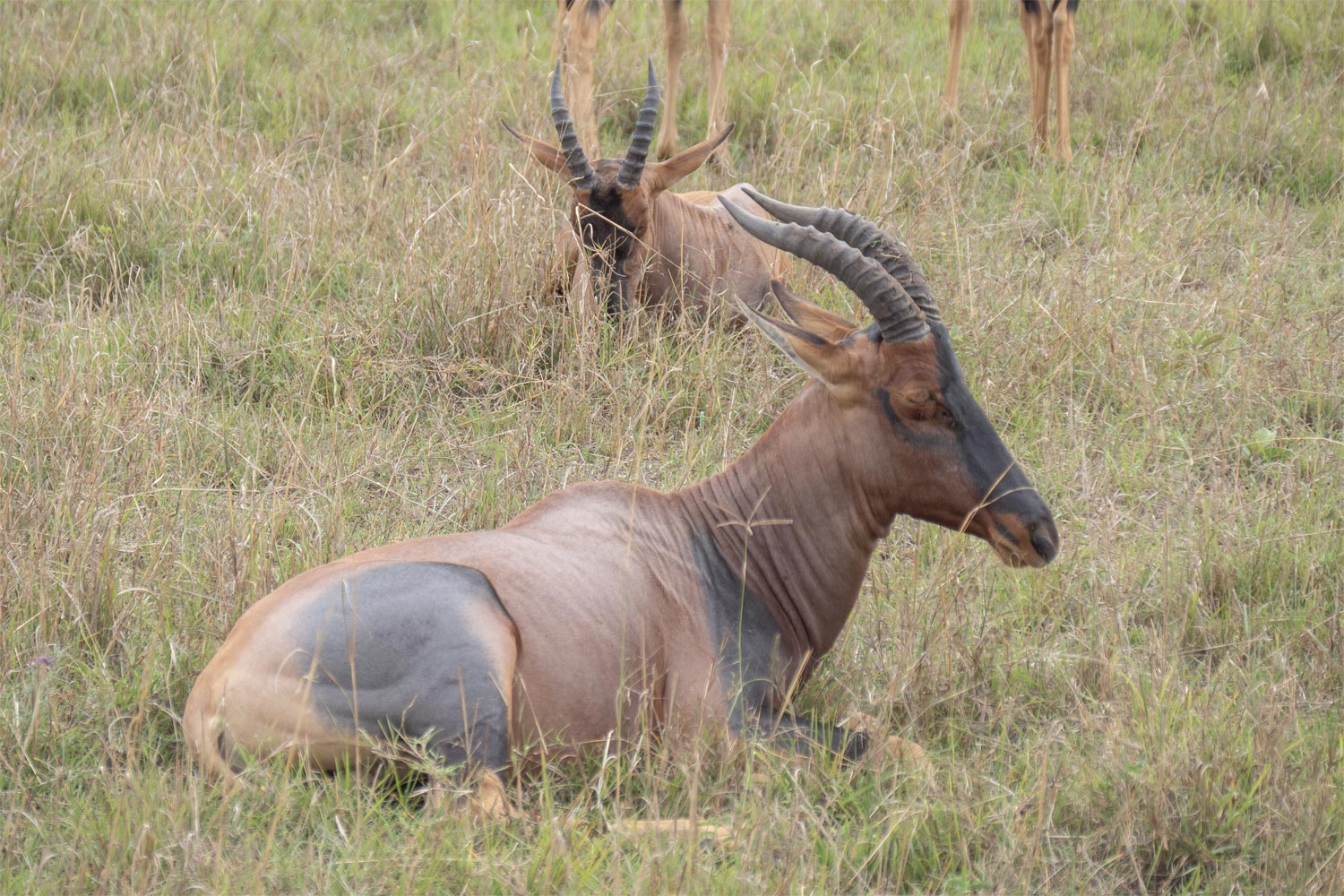
And macaques. They’re just gopniks.
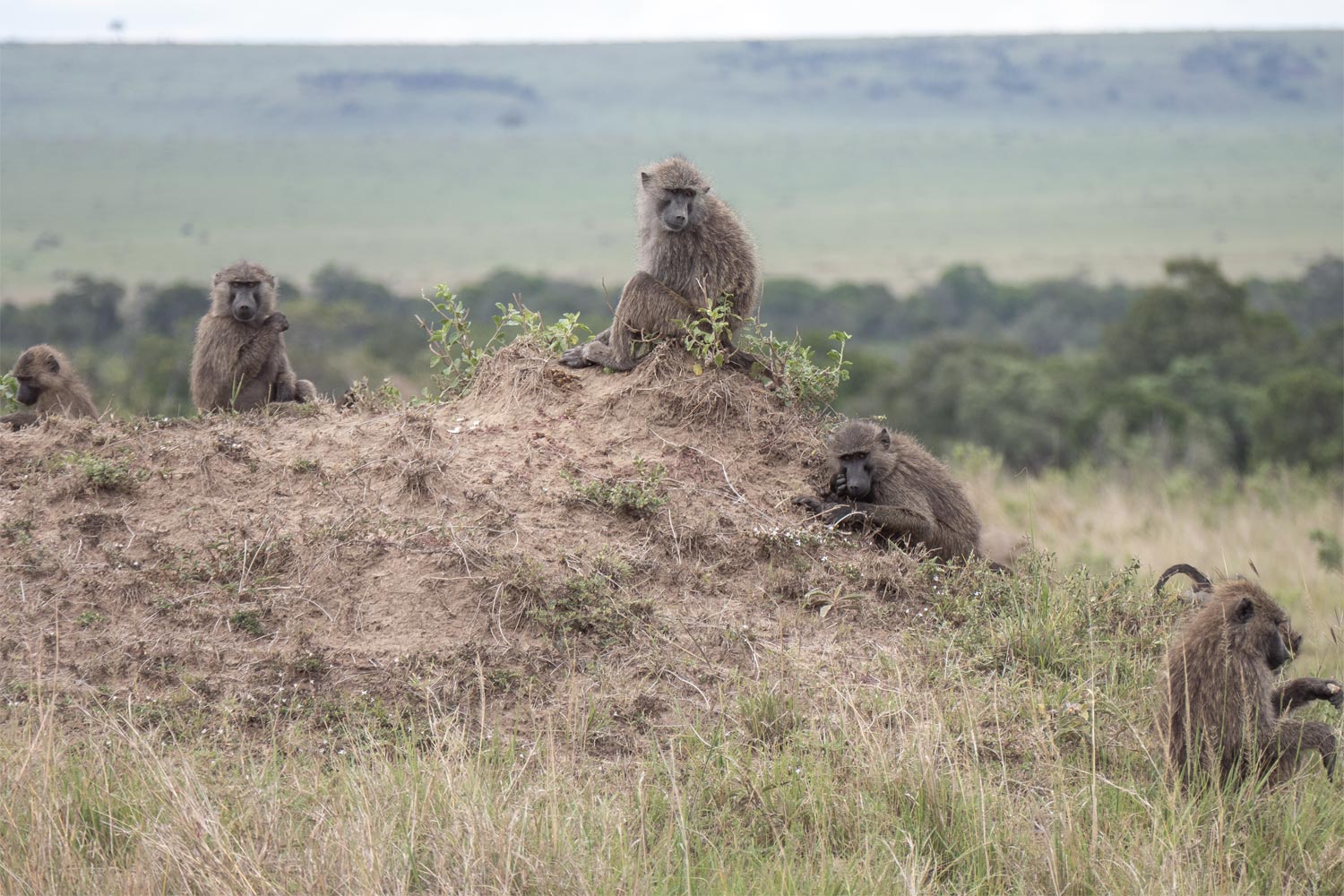
Among the larger animals, elephants can be found in the park.
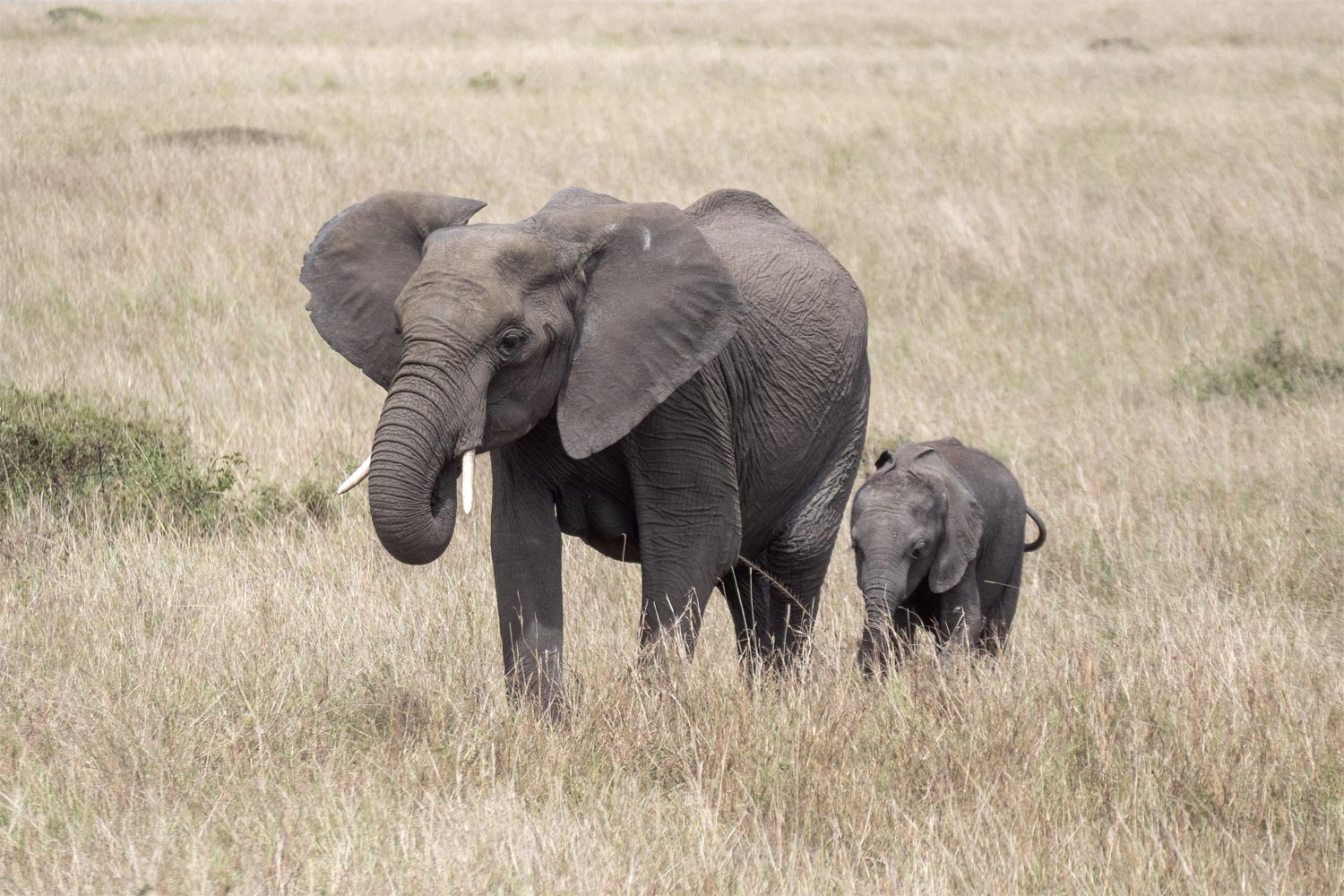
And also giraffes. Giraffes are truly amazing creatures. Such a lanky thing wanders the savannah, munching on trees. They look very funny and awkward.
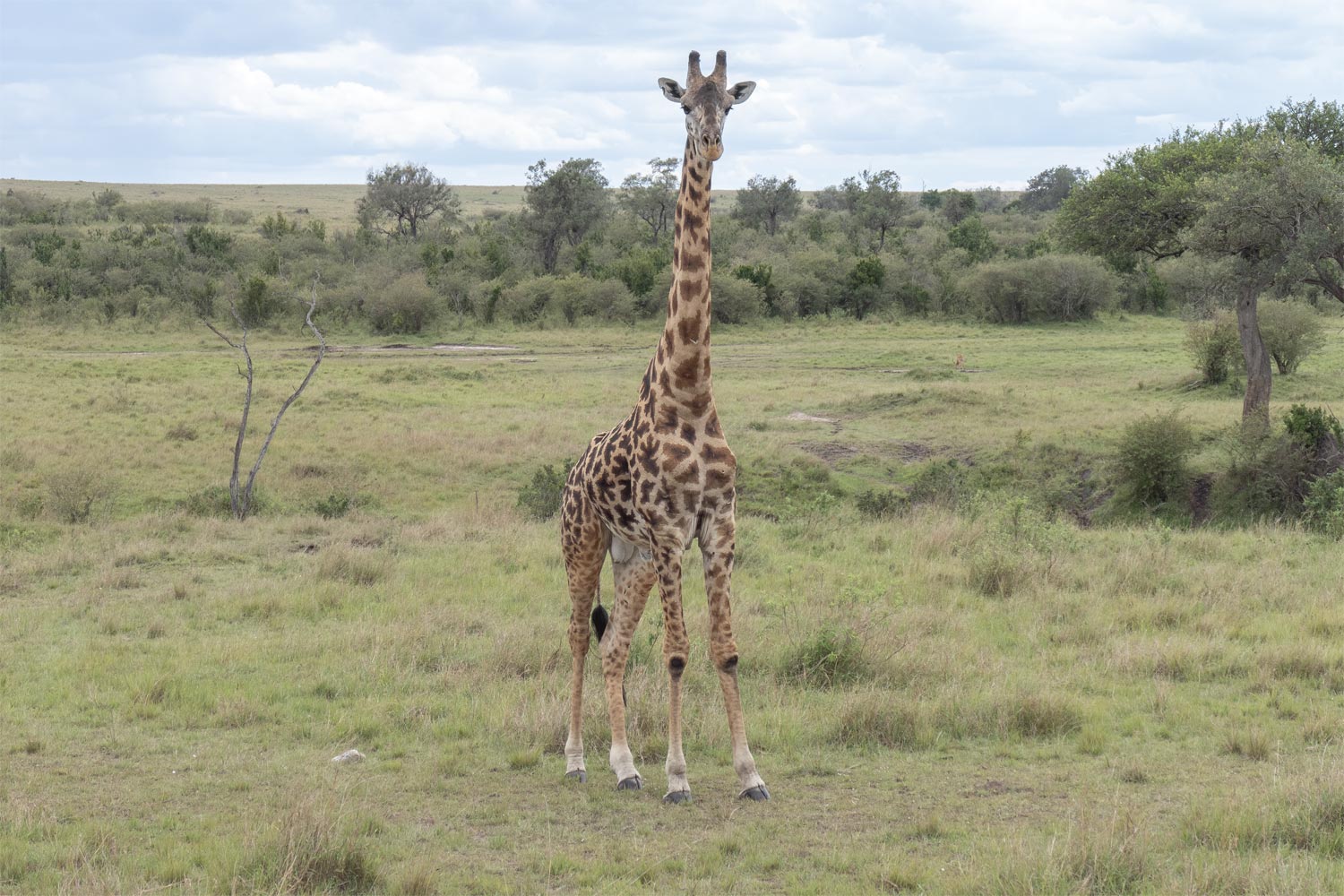
Giraffes have an extremely comical face. It looks like a hand with a puppet theater sock stretched over it.
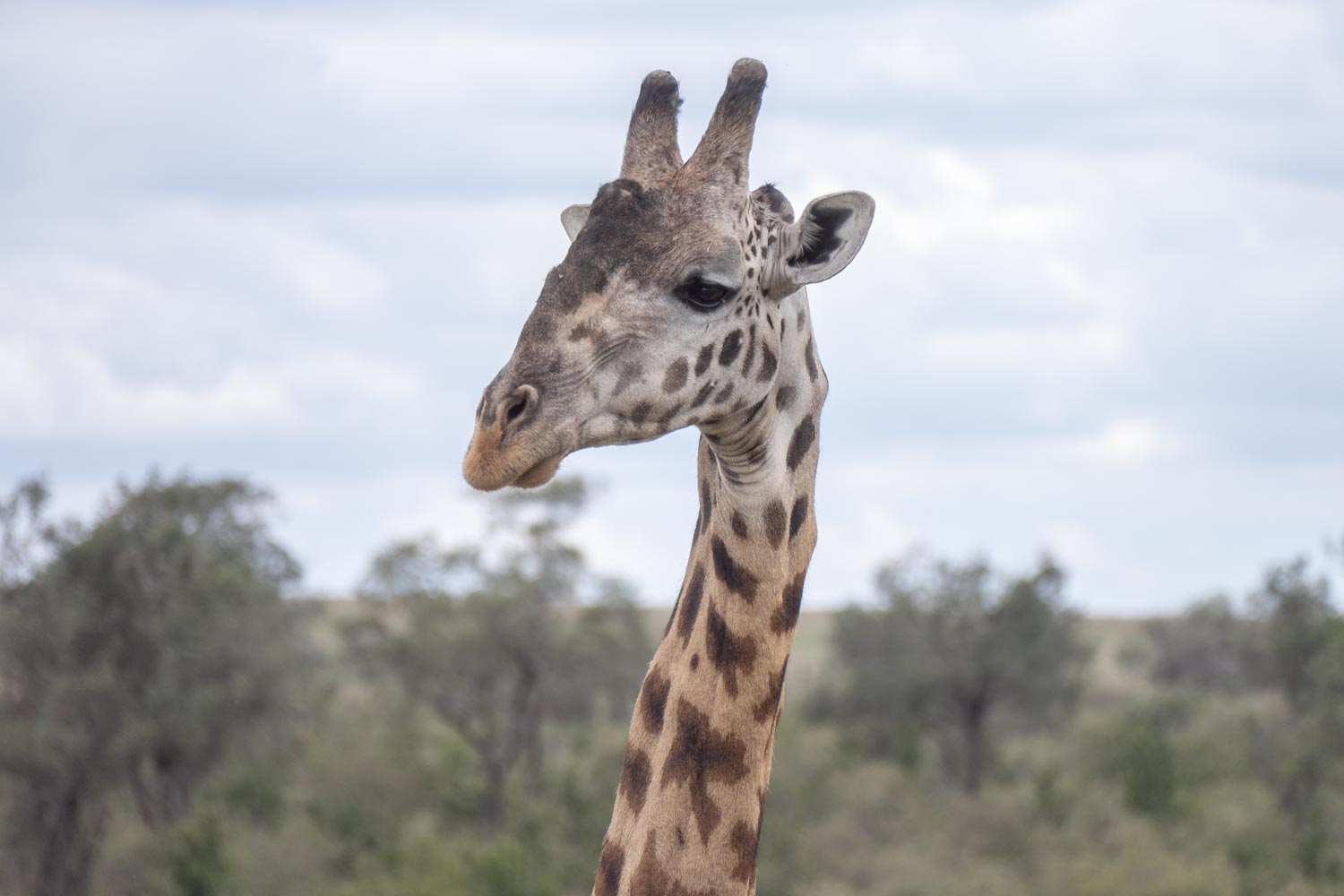
It turns out that giraffes have horns. However, they aren’t exactly horns. They’re called ossicones.
The difference between ossicones and horns is that ossicones are covered with skin, do not shed, and are present in both sexes. Otherwise, they are very much like regular horns. Giraffes even use them to fight, sometimes breaking them.
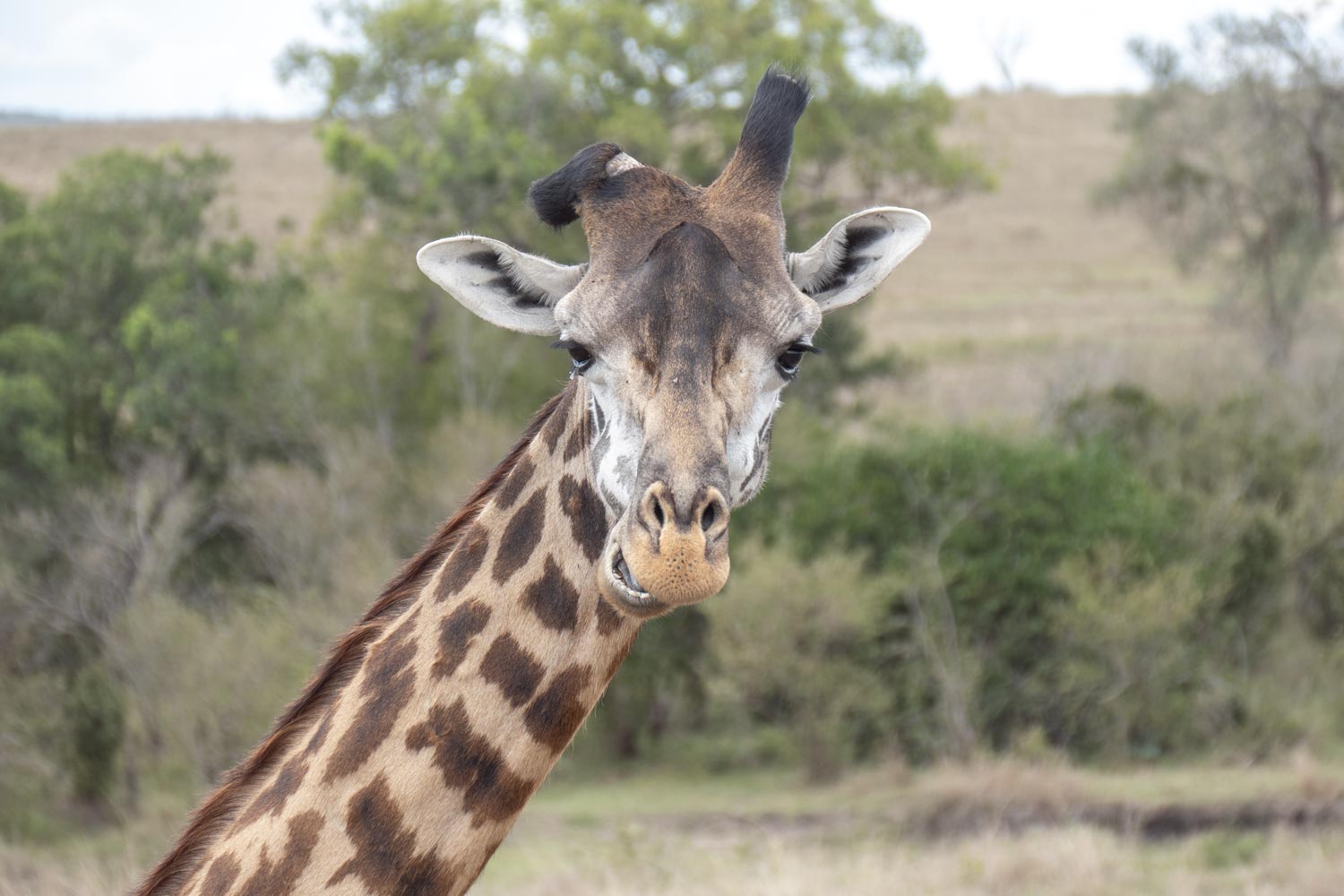
But the funniest thing is how a giraffe looks when sitting. It’s as if a crane has been folded up and is about to be transported somewhere else.
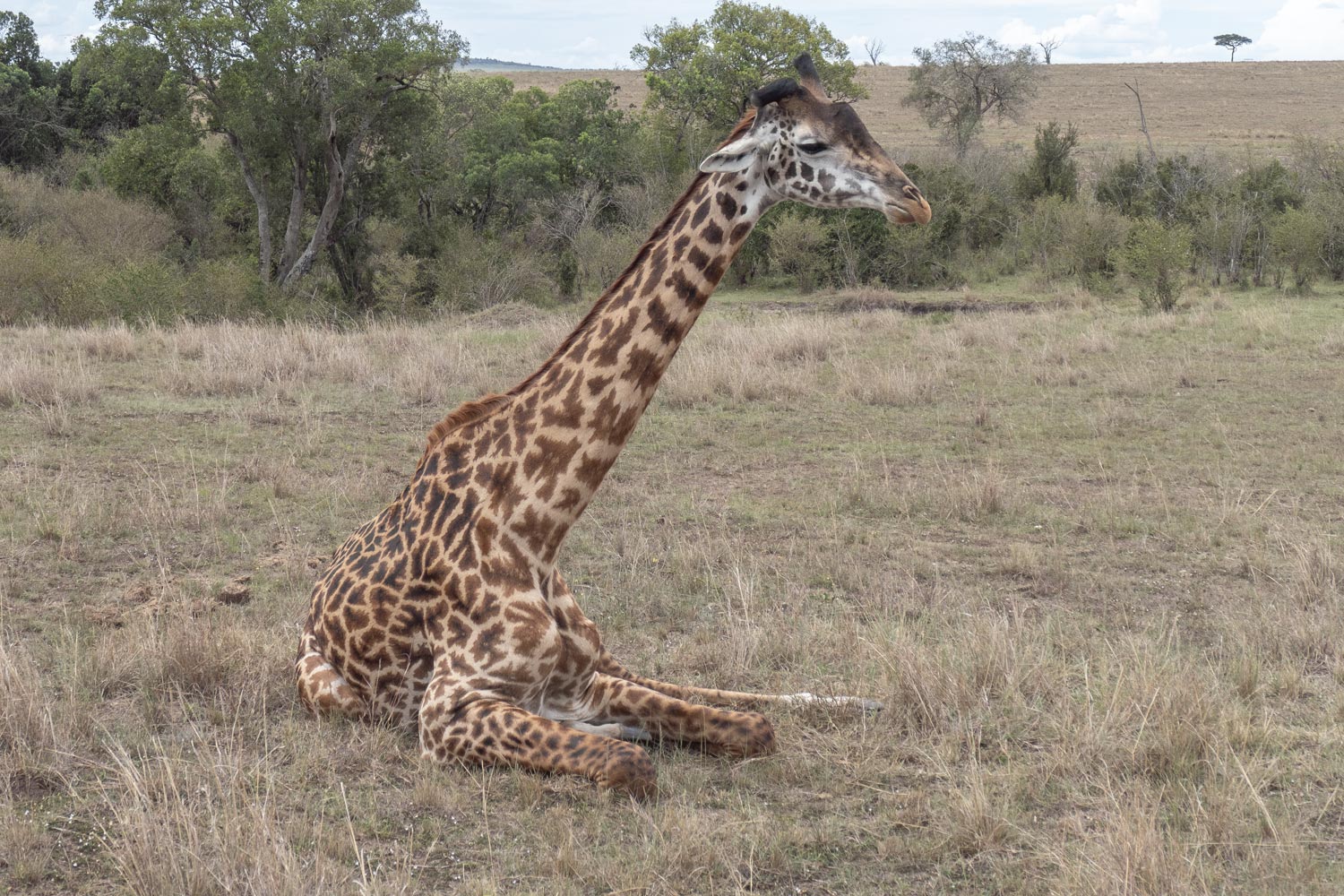
Mara Triangle
Near the border with Tanzania, there is a river surrounded by a special area of the park known as the Mara Triangle. This is a migration route for animals crossing the river, providing photographers with award-winning shots.
When the author was in Kenya, the migration season had already ended, so only the landscape turned out nice.
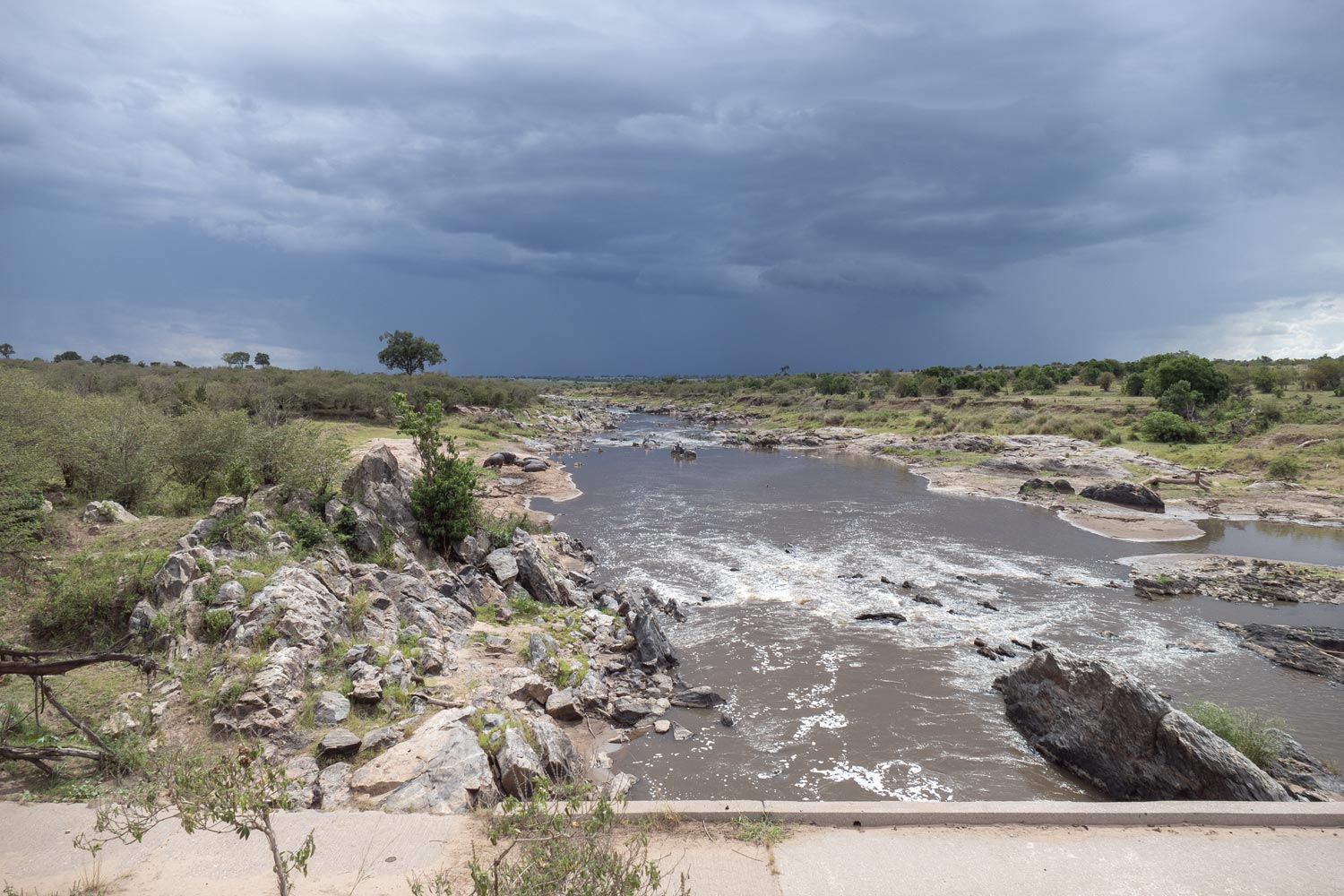
On the banks of this river grazes the hippopotamus. An absolutely incredible beast. It can weigh up to 4 tons, and its skin is nearly impossible to pierce. The hippopotamus has virtually no enemies because no one can beat it.
Moreover, this sucker attacks first and without warning, so it’s best not to approach it. The hippopotamus kills more people in Africa than lions, leopards, and elephants combined. When asked, “Who is it better to encounter: a lion or a hippopotamus?” the guide answers without hesitation: “A lion, at least there’s a chance to escape.”
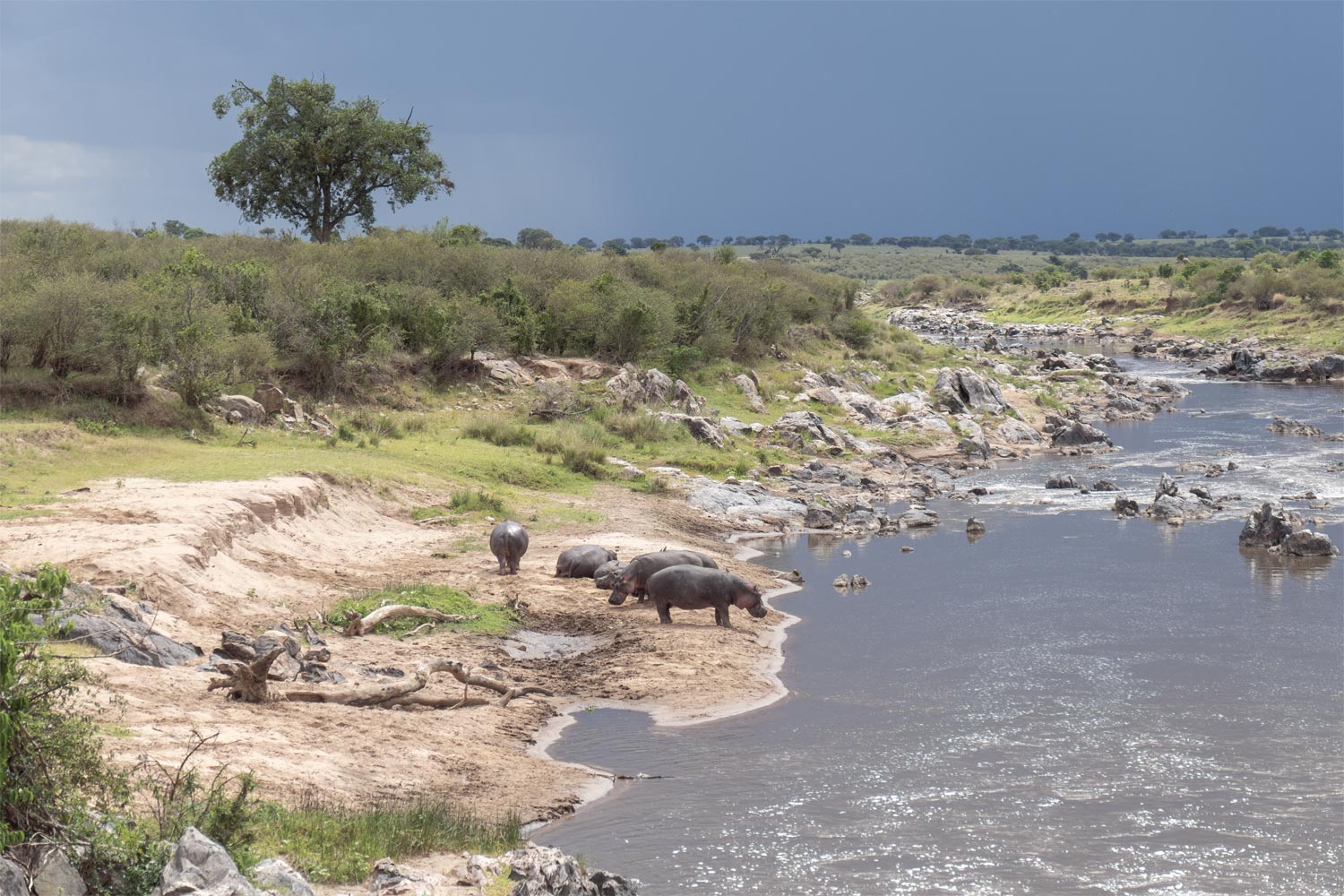
Hippos give birth in water and spend most of their lives there. When they swim, only part of their back is visible above the surface, with the rest of their body hidden underwater.
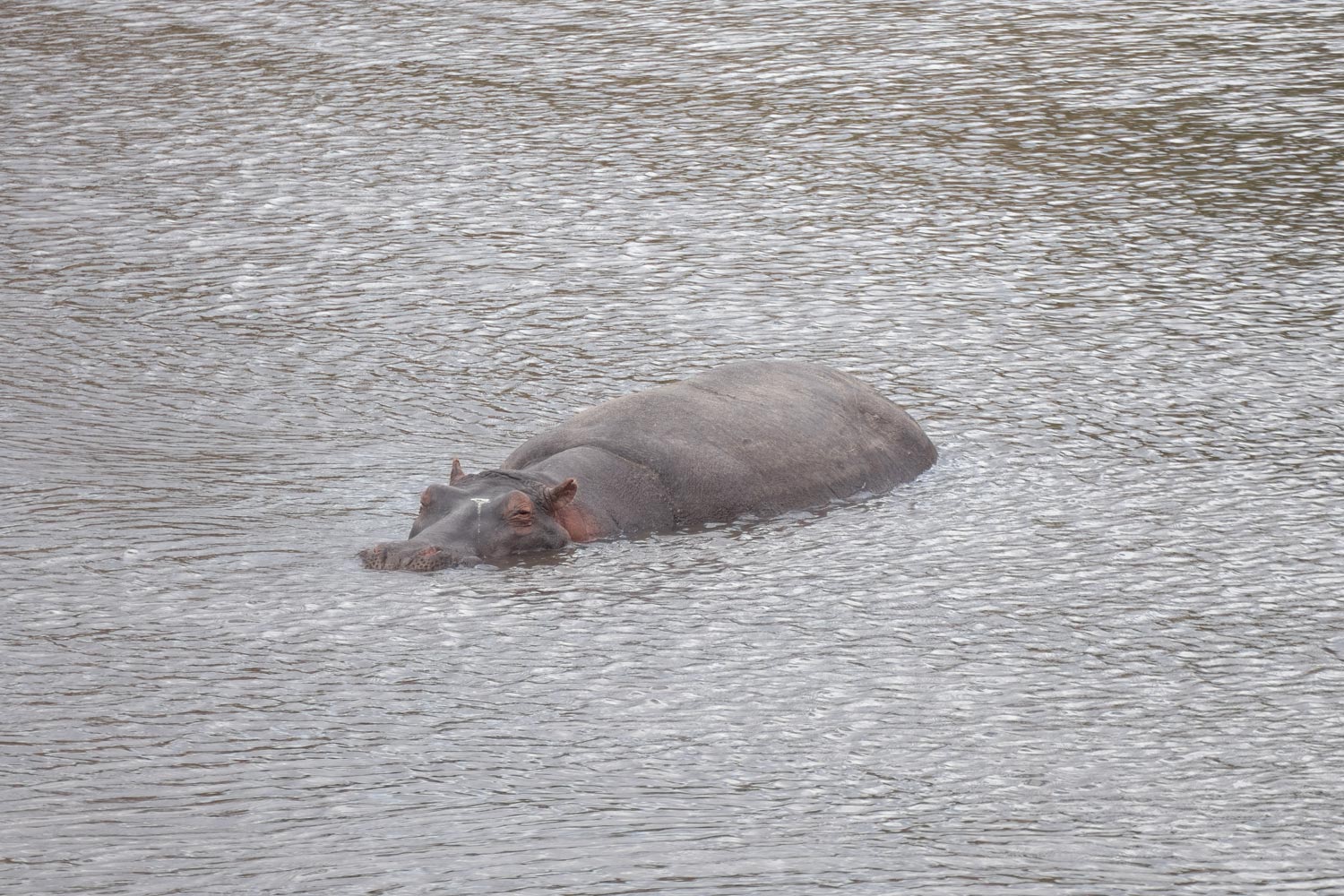
That’s why it’s easy to overlook them, especially at night, and then they may simply capsize a boat and tear apart everyone on board.
Compared to a hippopotamus, a crocodile is just a harmless rabbit.
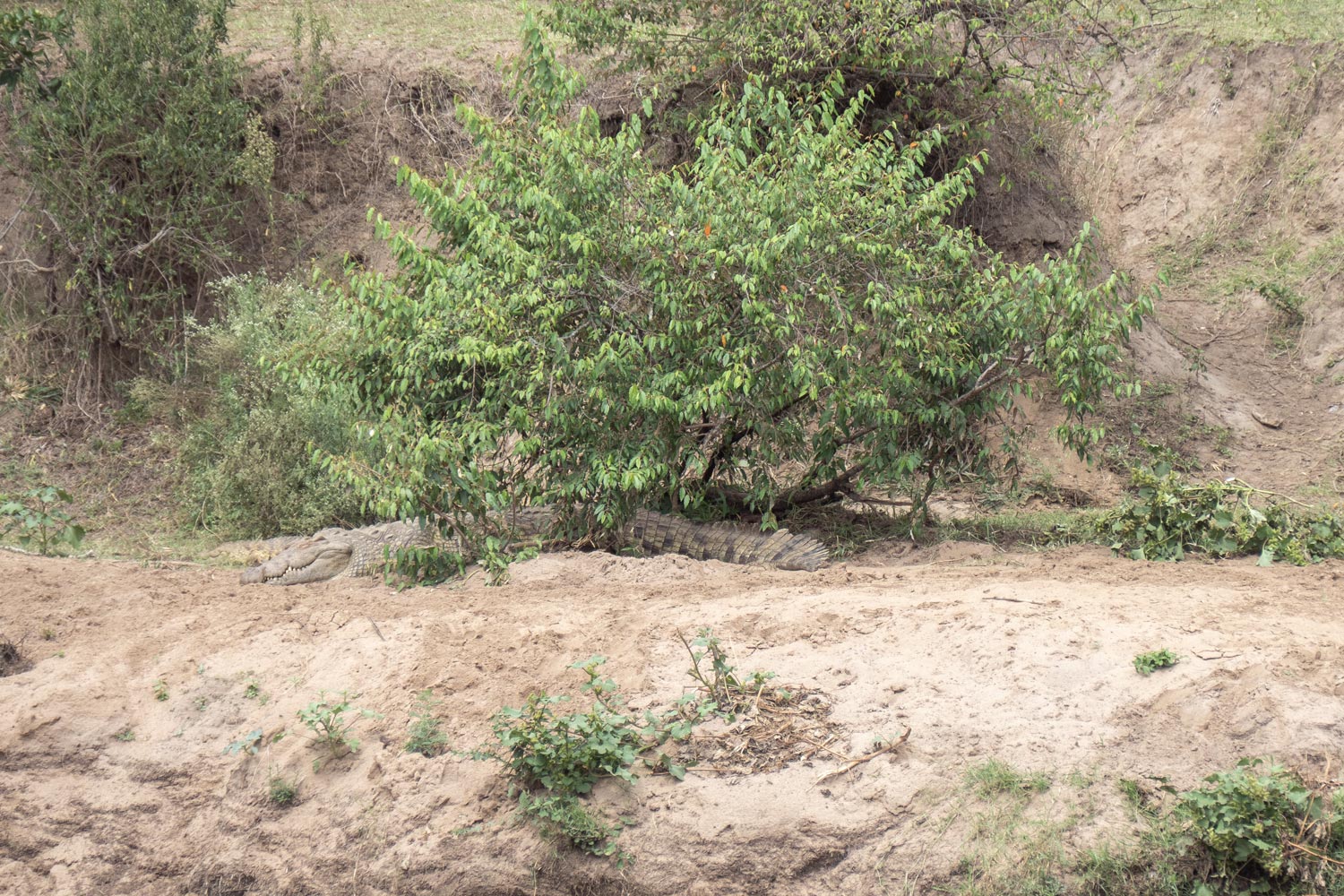
That’s what a safari is like. And the dawns here are quiet...
